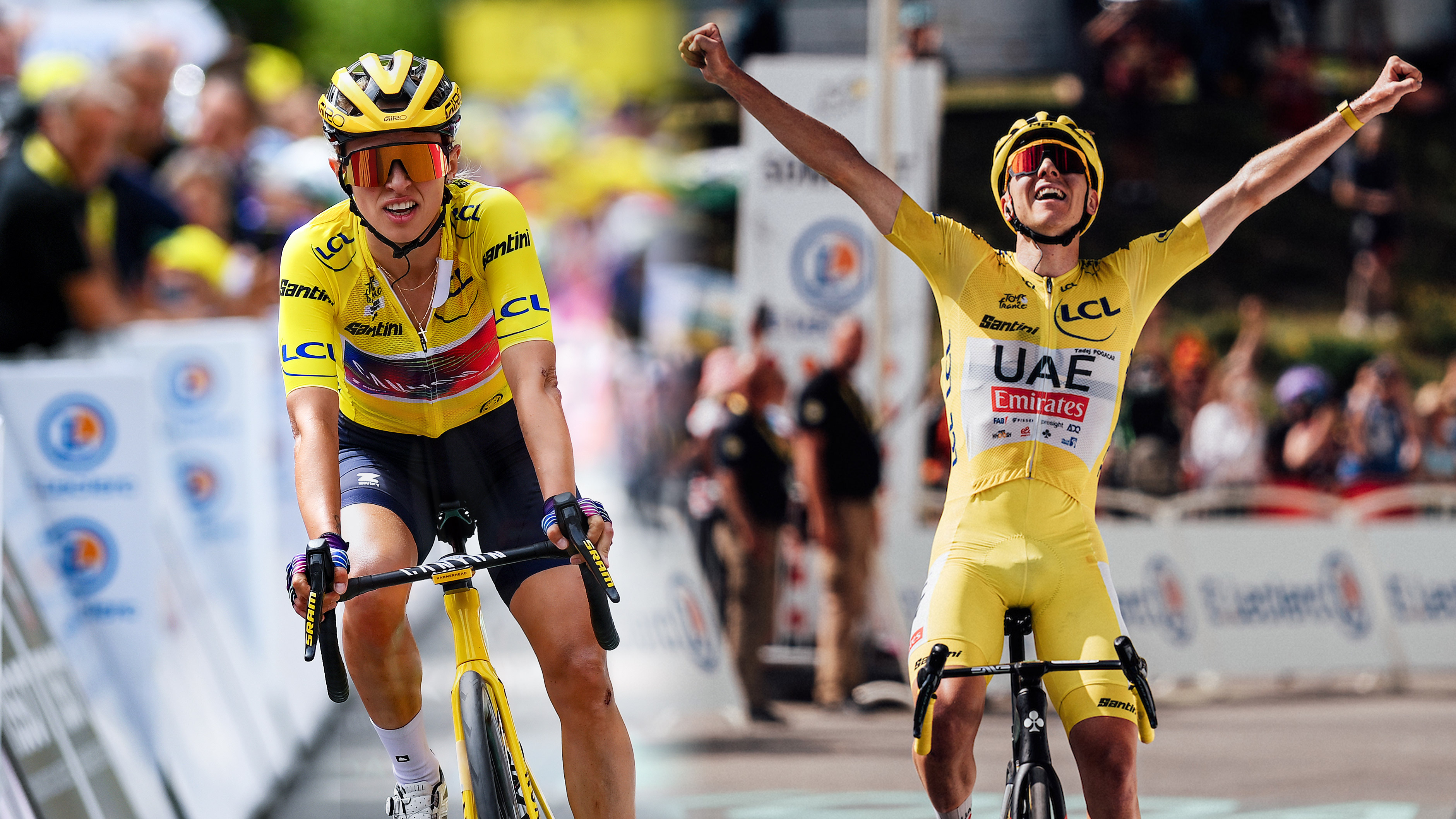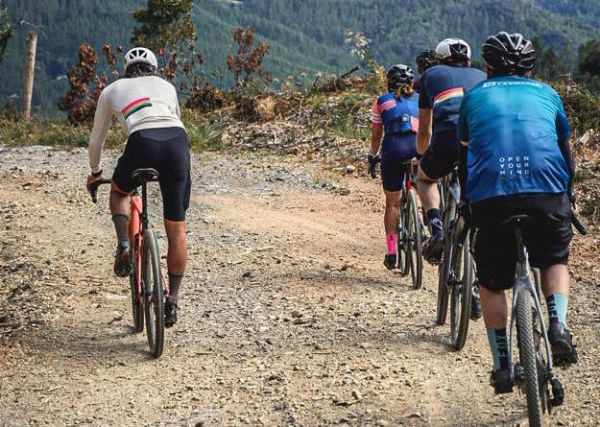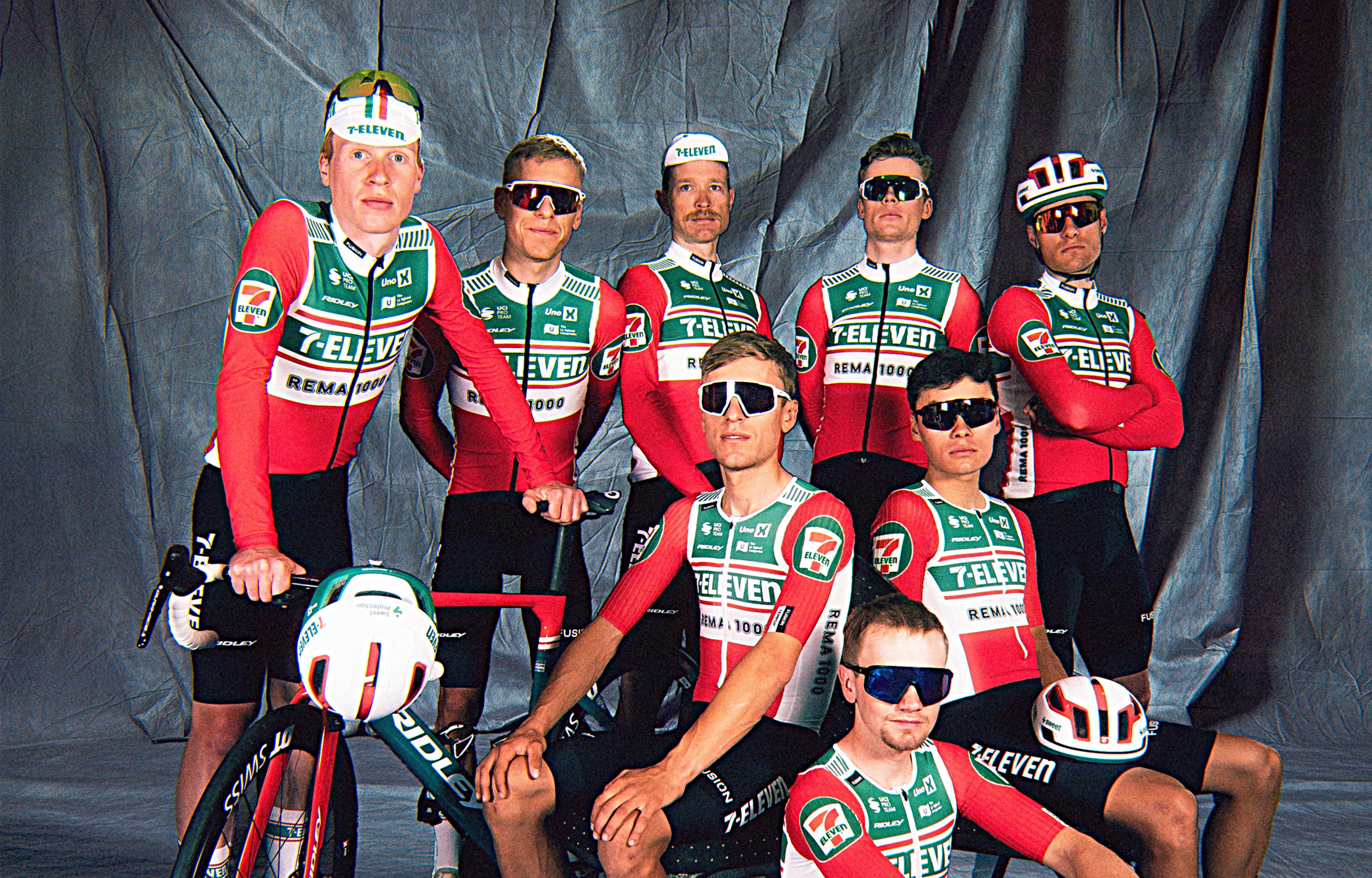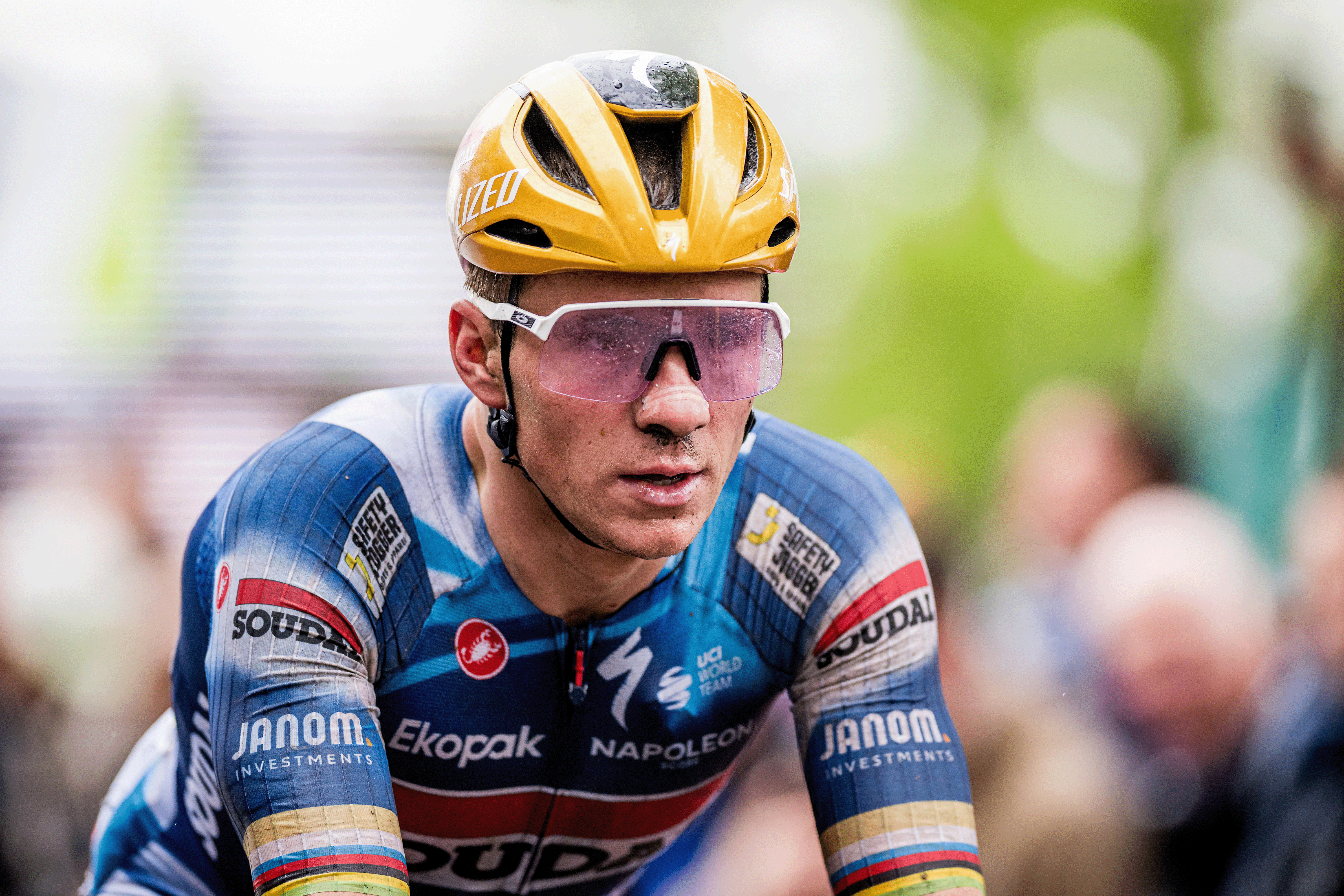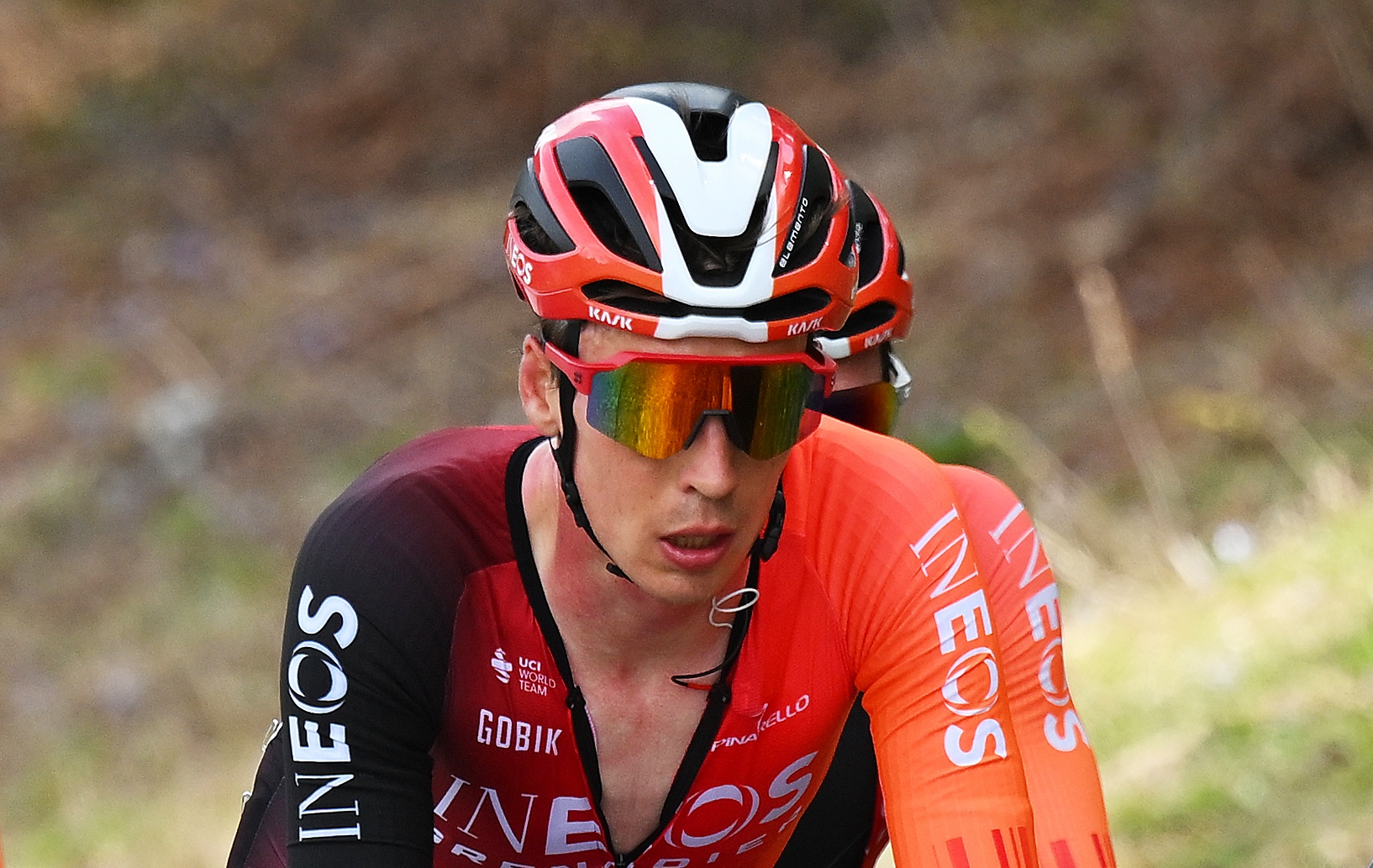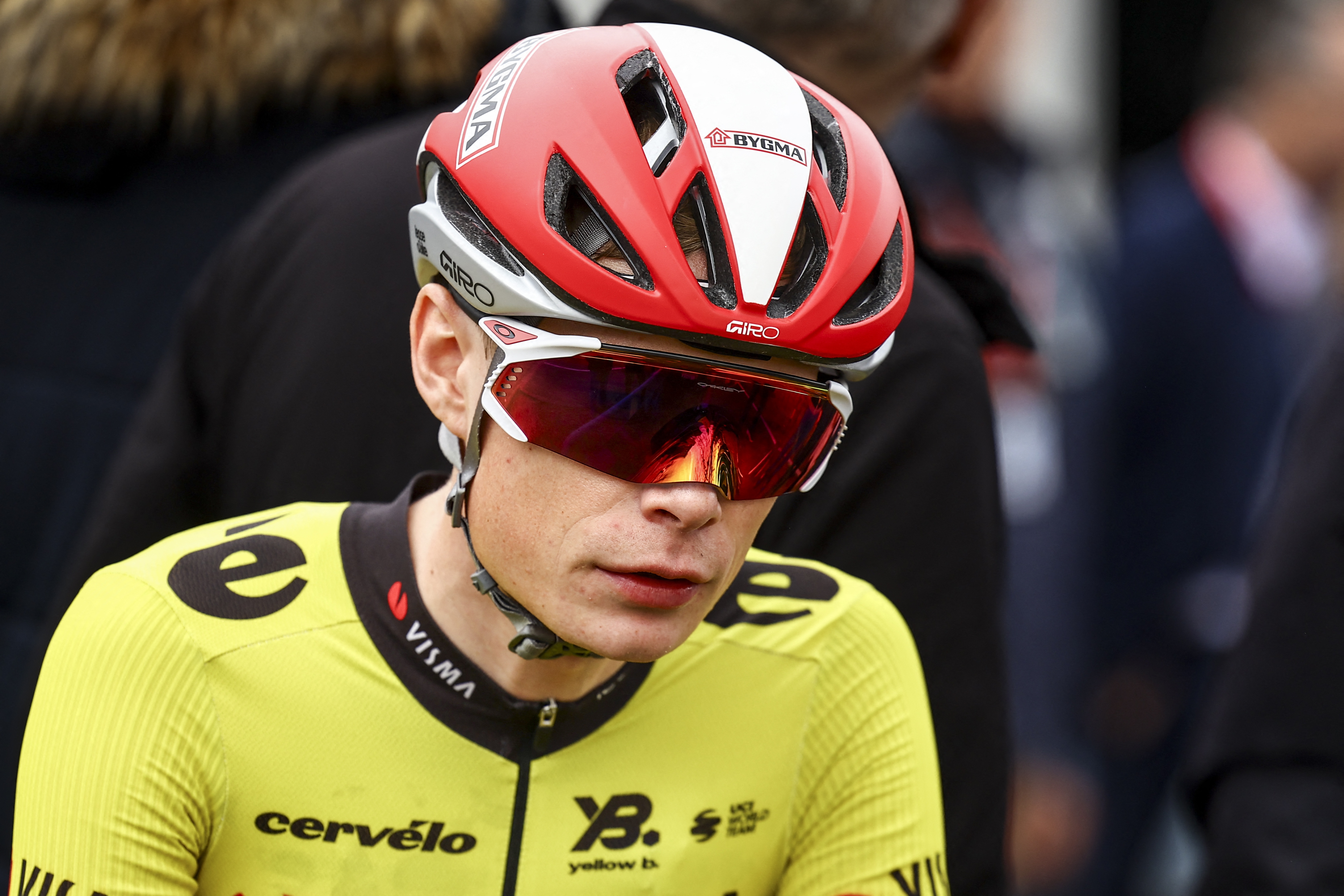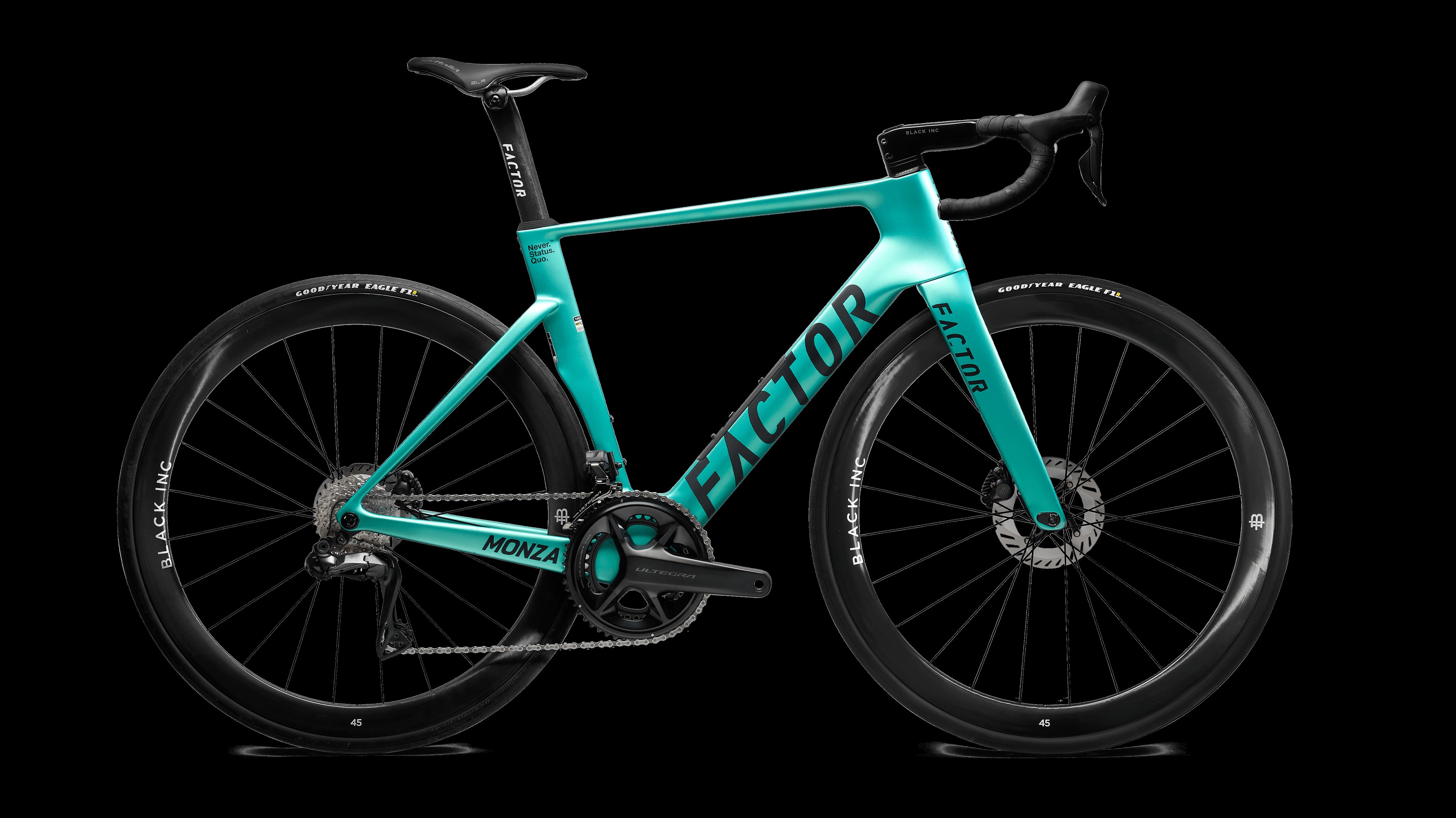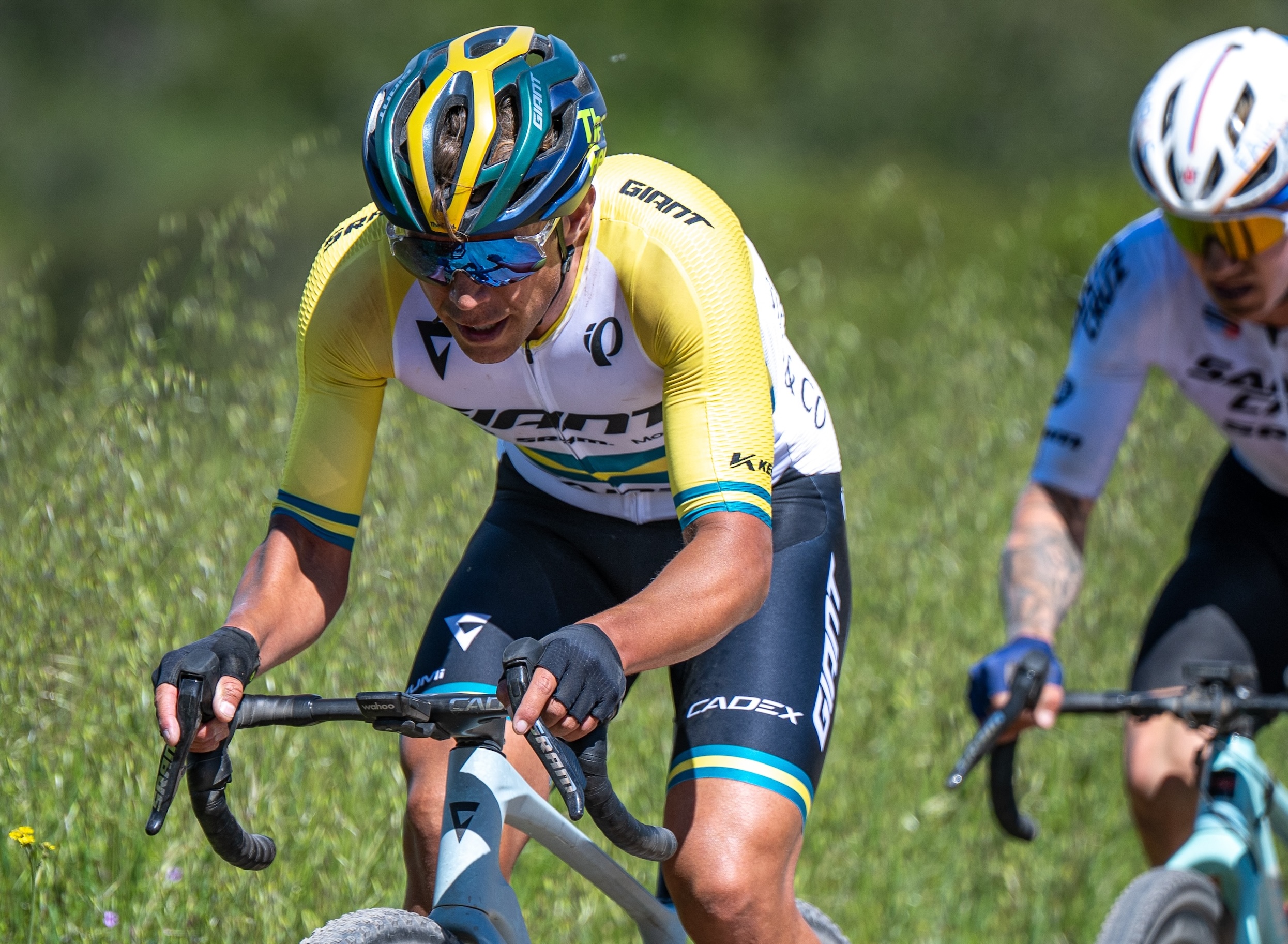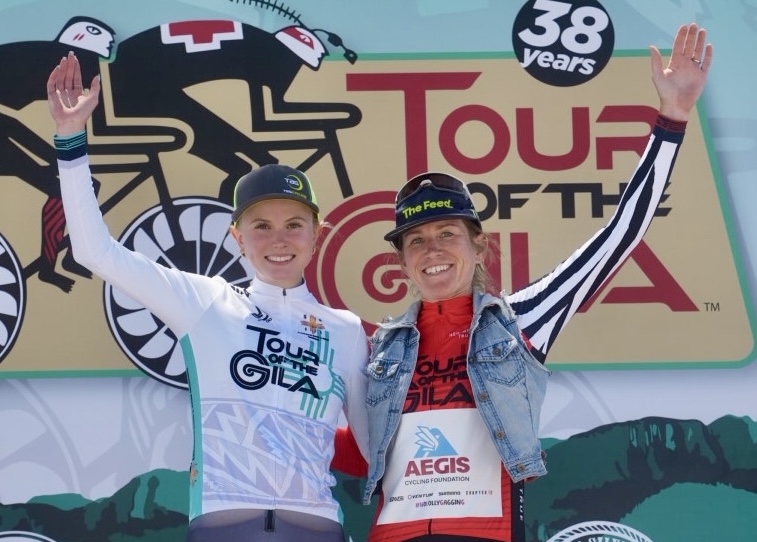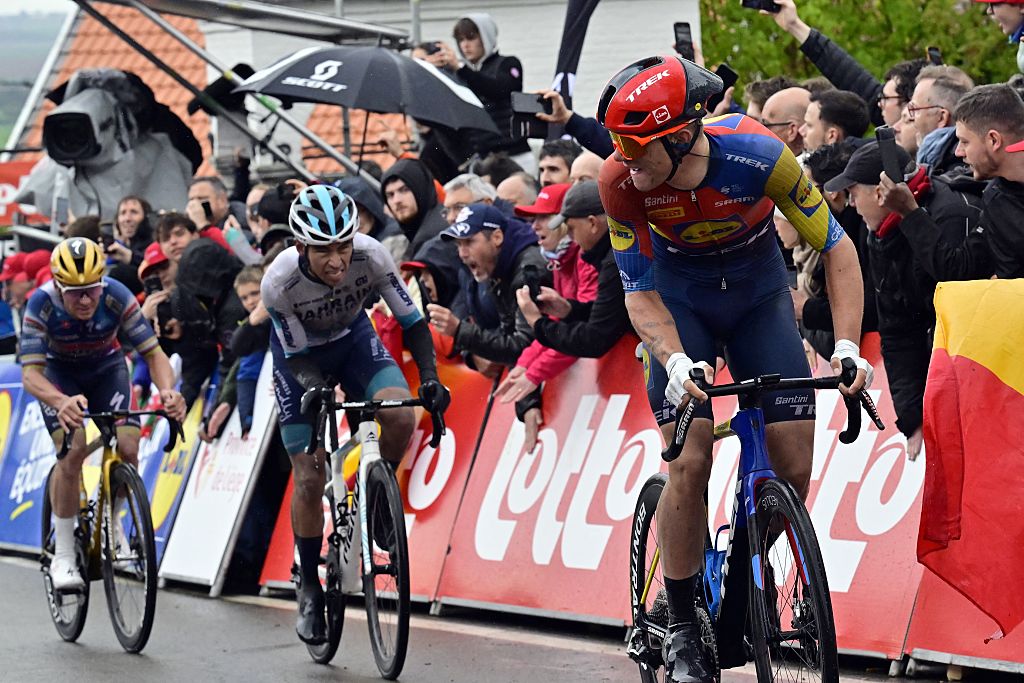2025 Tour de France, Tour de France Femmes presentation - Live
Follow the presentation of the routes of next year's Tour de France and Tour de France Femmes
Hello and welcome to our live coverage of the 2025 Tour de France and 2025 Tour de France Femmes route presentation.
The season may be over but today we have perhaps the biggest day of non-racing action of the cycling calendar. Entire season plans are built around the information we're about to receive, the narratives that will define next year's racing start to take shape here, and most importantly we will be able to picture the mountains that will be climbed next summer, which will sustain us through the long cold winter of cyclo-cross. That's all matched by a sense of grandeur to the occasion, with this being presented inside a packed-out Palais des Congres in central Paris. Riders will be here in ill-fitting suits, team bosses, sponsors, and dignitaries will all be present and correct, with all eyes on the race directors, Christian Prudhomme and Marion Rousse.
The presentation kicks off at 11am CET, so more than half an hour away. Even then, you can expect bland speeches from ASO's top brass, montages of the 2024 races which do actually raise the pulse, then more bland stuff from local officials of the regions hosting the Grand Departs, before we start the run-through of each and every stage for both races.
The post-presentation scramble is always the most entertaining part of the day. What does this all mean? Who does it favour? What sort of a Tour will we get?
Riders and team bosses will attempt to answer these questions, as Prudhomme and Rousse head backstage to fend off a barrage of questions over their intentions. Why do you hate time trials? Why isn't the Tour coming to our region? And so on and so on.
The inquest is inevitably a tad overblown but the ASO have engineered an event and a spectacle that does self-fulfillingly feed into the Tour's towering status in the world of cycling.
The route is always kept under wraps until the presentation but while ASO are effective in avoiding full-scale leaks, they are perennially powerless to prevent a pretty accurate outline of the routes emerging beforehand. That's because local French mayors love letting slip that their town may or may not be hosting a stage finish, while hotel reservation patterns are used by the keenest of sleuths to piece together a rolling map of the Tour caravan rolling through the country. Here's how it's looking so far...
Here's a glimpse inside the Palais
🤩 It's almost time... 🤩 Nous y voilà... #TDF2025 | #TDFF2025 pic.twitter.com/n6mEOj0MkiOctober 29, 2024
Here we go
The lights go down and the master of ceremonies walks out onto the stage.
We are now introduced to the pro riders who are present today. They're all invited to walk across the stage. Rumours are that it's not exactly the most star-studded attendance this year....
Strong applause for retiring Frenchwoman Audrey Cordon-Ragot, and up-and-coming Frenchman Romain Gregoire. Valentin Madouas, Lenny Martinez, and Evita Muzic get big hype too but few international stars as of yet...
Sam Bennett is here in full AG2R school uniform.
Magnus Cort is here in a shirt that feels a little too casual. And now his teammate Alexander Krstoff, who's wearing an open shacket. Standards are slipping.
Dylan Groenewegen is here, and now Jasper Philipsen, the Tour's most successful sprinter of recent years.
Anthony Turgis is next and the compere tries and fails to get the crowd to shout his surname... Kevin Vauquelin is next up.
We have are first riders stopped for interview...
It's Justine Ghekiere, who won the polka-dot jersey at the Tour de France Femmes and Biniam Girmay, who won the green jersey at the Tour de France. Both say it was a dream, and that it has changed their life with the attention they now receive.
And now for one last rider... it's Mark Cavendish. He won't be racing the Tour in 2025 but he is obviously one of the all-time stars of the Tour's history, his record 35th stage win being one of the biggest storylines of this year's Tour.
"It's been great. Things haven't changed that much, I've been riding my bike, spending time with my kids, I just haven't been shouting in races anymore. I've been travelling, been busy, been on holiday - it was the first time I could really enjoy a holiday," Cavendish says.
"Like every rider who's ridden the Tour de France and the Tour de France Femmes avec Zwift, you finish it and think 'I'm never doing that again' and a couple of days later you miss it and long for the buzz."
Cavendish is asked about next year, amid some confusion over the status of his impending retirement.
"We'll see," he says coyly.....
That means we don't have either the Tour de France champion, Tadej Pogacar, or the Tour de France Femmes champion, Kasia Niewiadoma, in attendance. Likewise, no recent winners and prime contenders such as Jonas Vingegaard and Demi Vollering or marquee stars such as Remco Evenepoel, Lotte Kopecky...
ASO president Jean-Etienne Amaury comes onto the stage now. No headlines will come of this, but he'll thank some people and pay tribute to some others. Romain Bardet gets a nod after riding his final Tour, Biniam Girmay is lauded for his groundbreaking achievements, and Mark Cavendish is hailed for his history-making.
Corporate partnerships, charity partnerships, blah blah blah... but now it looks like we have our first montage, and it's the 2024 Tour de France Femmes.
It's a cracking montage, as we've come to expect. We get a thrilling flashback to all the stage, including that moment when Vollering crashed and - as the commentary points out - "none of the SD Worx riders have come back to wait!" It ends with that thrilling battle on Alpe d'Huez and the contrasting emotions of Niewiadoma and Vollering beyond the line. It'll be on YouTube later - well worth a watch.
Christian Prudhomme and Marion Rousse hit the stage
Rousse hails the drama of that race as she kicks things off. She says the first two editions of the TDFF had been a success but the third edition was an unknown, with a different date due to the Olympics and a foreign Grand Depart. After the trip up Alpe d'Huez she says more of cycling's iconic locations are being coloured with women's cycling history.
The 2025 Tour de France Femmes avec Zwift will take place over nine stages - up from eight and over the UCI limit - and will start in Brittany, but we already knew both of those things. A promo video for Brittany now rolls.
Some photos are starting to roll in from our agencies
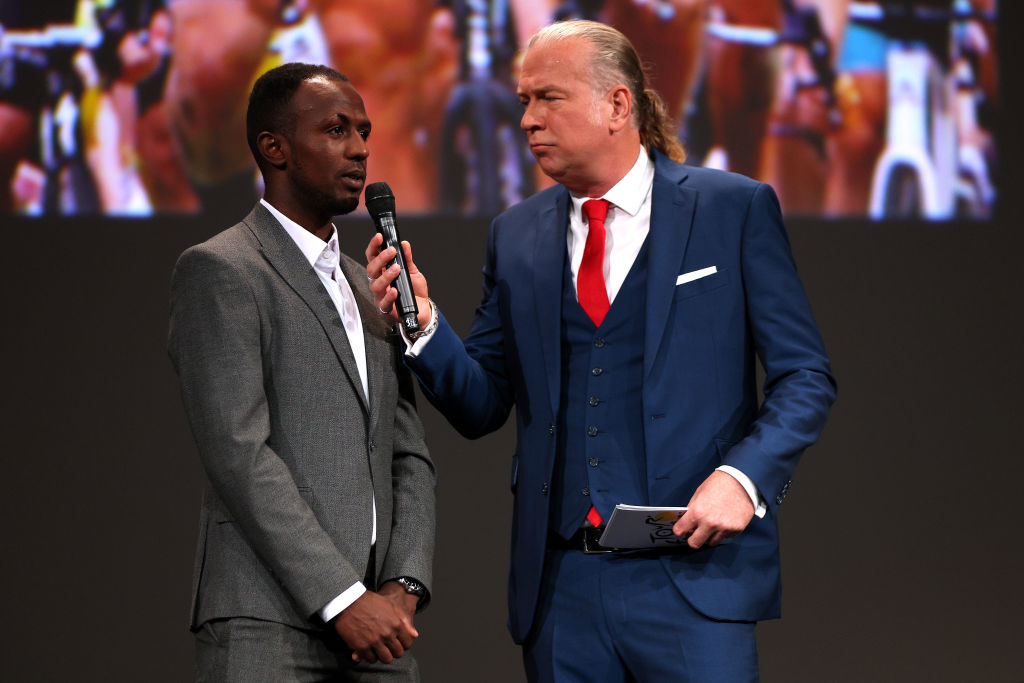
It's a little casual from Magnus Cort but ASO can have few complaints when their compere is wearing white trainers with a three-piece suit.
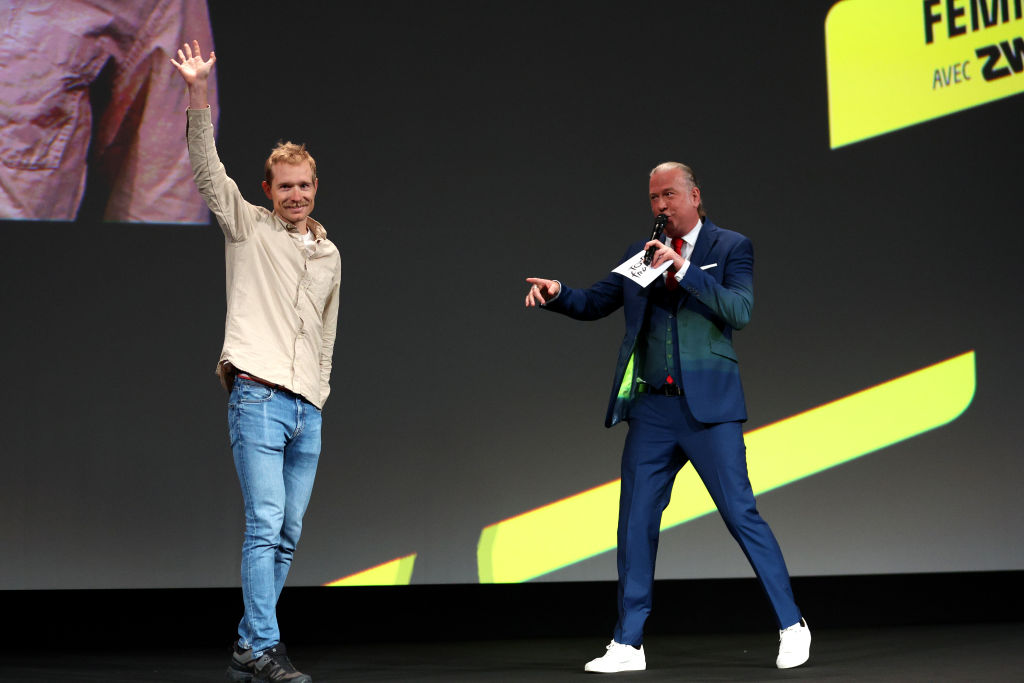
A regional official for Brittany is invited onto the stage but we're now about to see the route for the Tour de France Femmes!
The first two stages are already known. The first starts in Vannes and finishes in Plumelec, with the finish at the top of the famous Côte de Cadoudal. The second stage will be held in the neighbouring Finistère department. It will begin in Brest and finish in Quimper with a final loop in the town and a steep finish.
The snaking dot makes its way diagonally down through France towards the Alps, where the race will finish at the ski resort of Chatel.
Stage 1 is confirmed for that finish on a circuit with the Côte de Cadoudal in Plumelec - one for the puncheurs.
Stage 2 is another punchy one from Brest to Quimper, a day of constant undulations and we have another finishing circuit with an uphill finish. Peter Sagan won here when the men's race last visited.
Stage 3 heads from La Gacilly over to Angers. After two stages for the puncheurs, Rousse says, this is one for the pure sprinters. That completes the Grand Depart in Brittany.
Stage 4 is another sprint stage, heading south east from Saumur to Poitiers.
Here's the map, as we await the info on the final five stages.
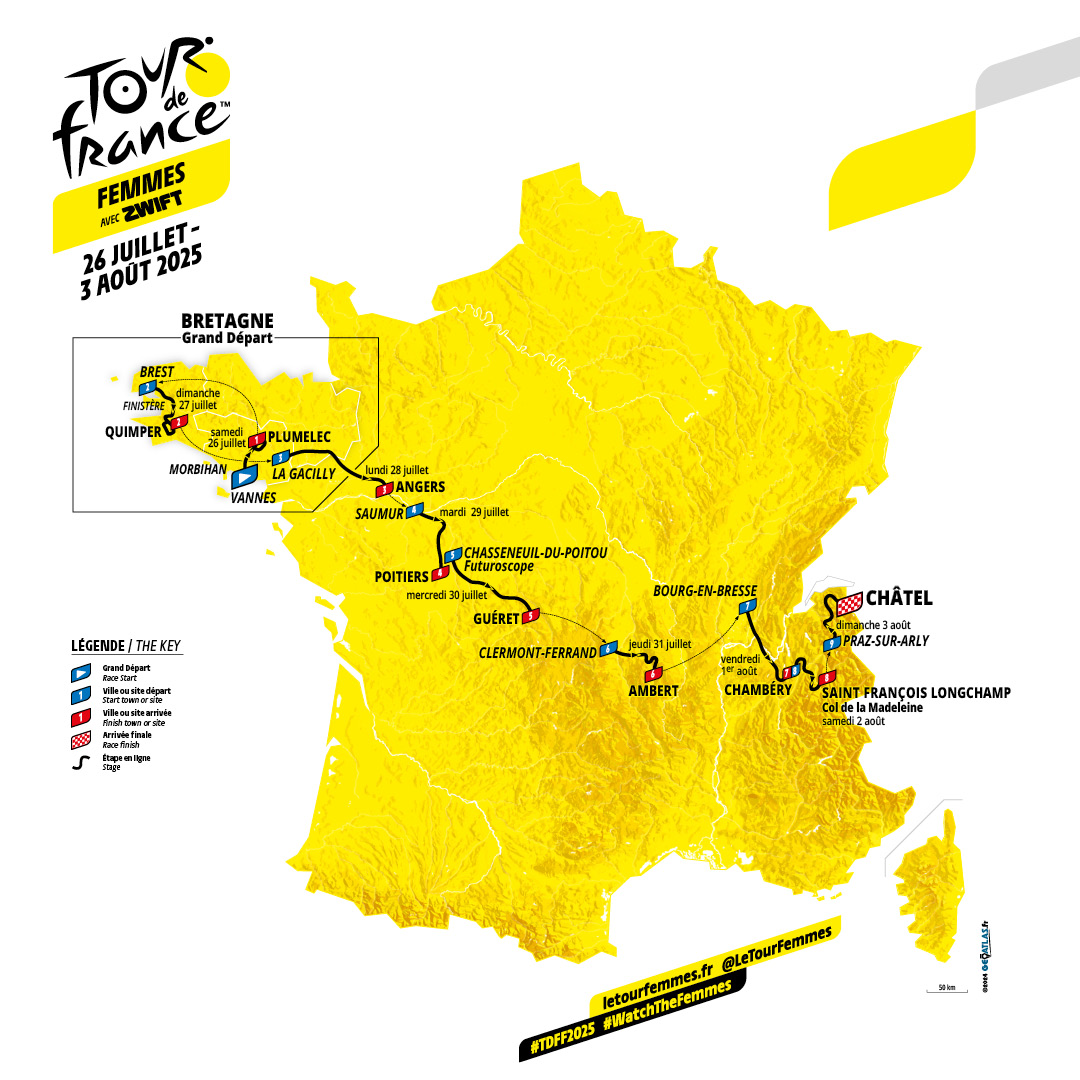
Stage 5 sees the route become hillier, especially as the stage goes on. Three climbs, the last one topping out 7km from the line.
Stage 6 features 2350 metres of elevation. Five climbs, two early testers then three tougher ones in the Massif Central. The climbing intensifies as does the GC action.
Stage 7 takes us into the Alps. It features less elevation gain than stage 6 overall but the late climb of the Col du Granier is the hardest of the race so far. Another downhill finish, this time into Chambery.
Stage 8 is our first summit finish, and it's at Sain Francois Longchamp, on the Col de la Madeleine at 2000 metres of altitute. 3490 metres of elevation gain!
Stage 9 is the finale and features a finish in Chatel. They go over the fearsome and famous Col de Joux Plane mid-stage, before the Col de Corbier and then a more gentle incline to the finish in Chatel.
So, no time trialling, even with the increase to nine stages. The first two are punchy stages in Brittany, the next two are sprint opportunities, and the next two take us through the medium mountains of the Massif Central. The final three stages are in the Alps, where the GC will really be decided. The penultimate stage is the most obviously critical day of racing, with major elevation gain and the summit finish on the Col de la Madeleine.
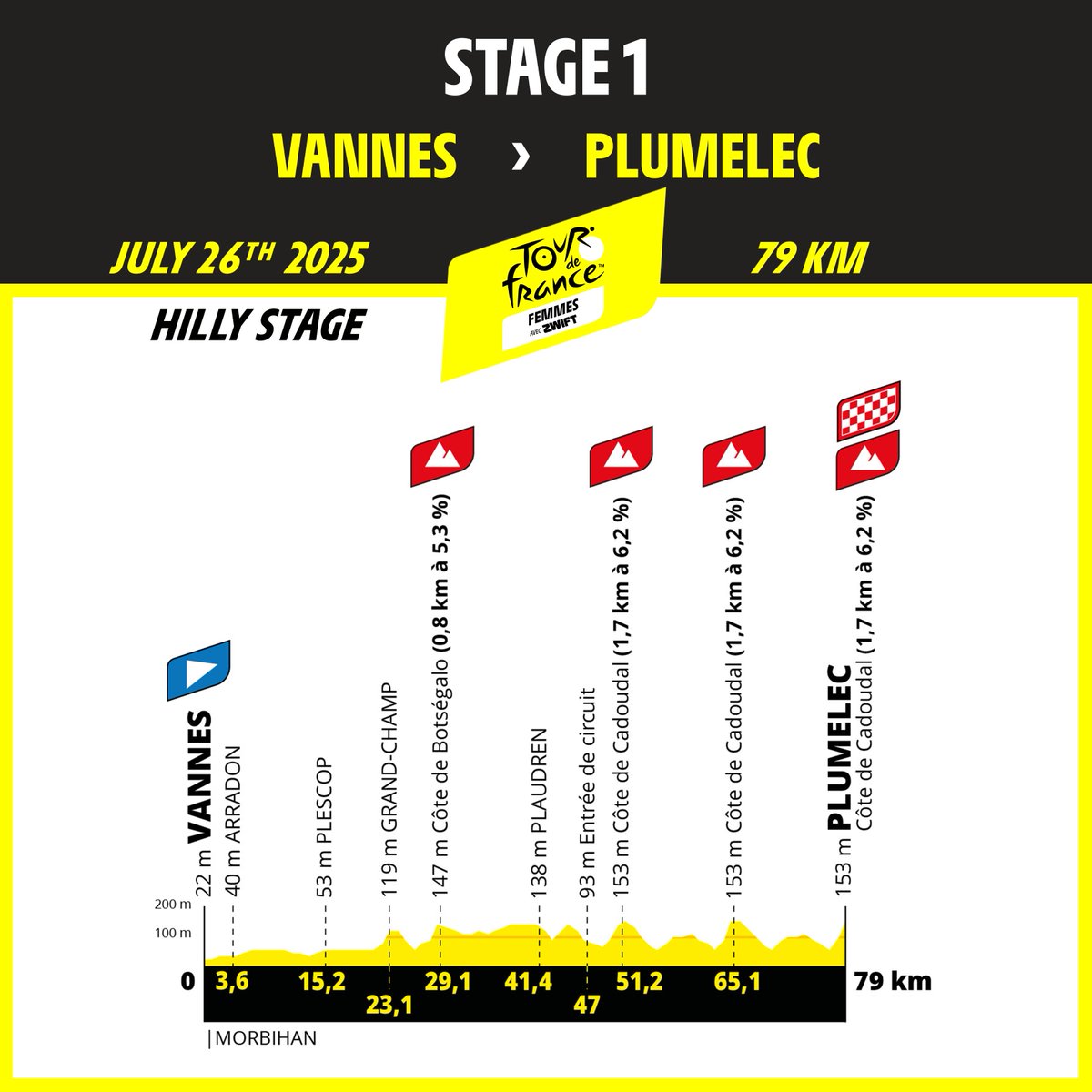
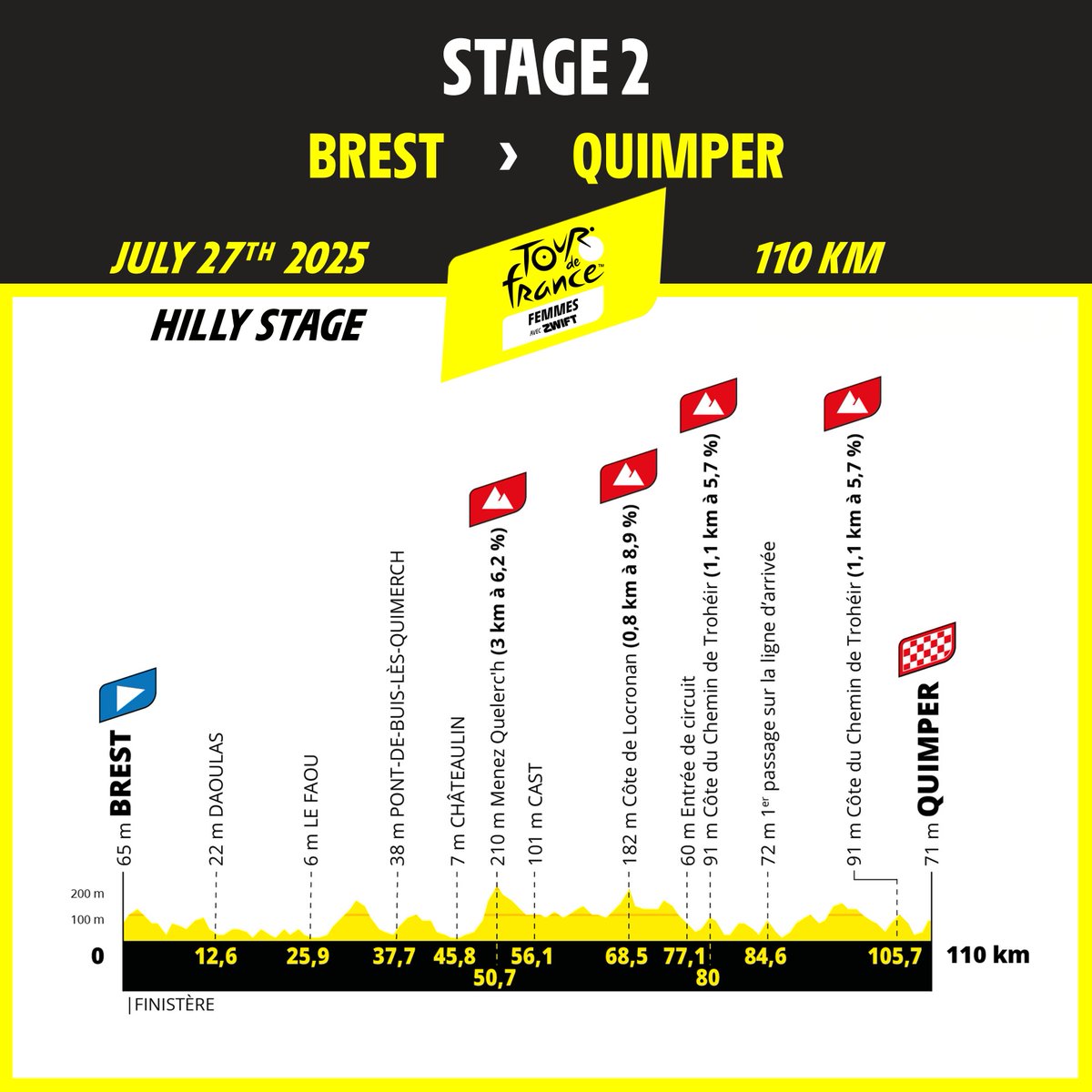
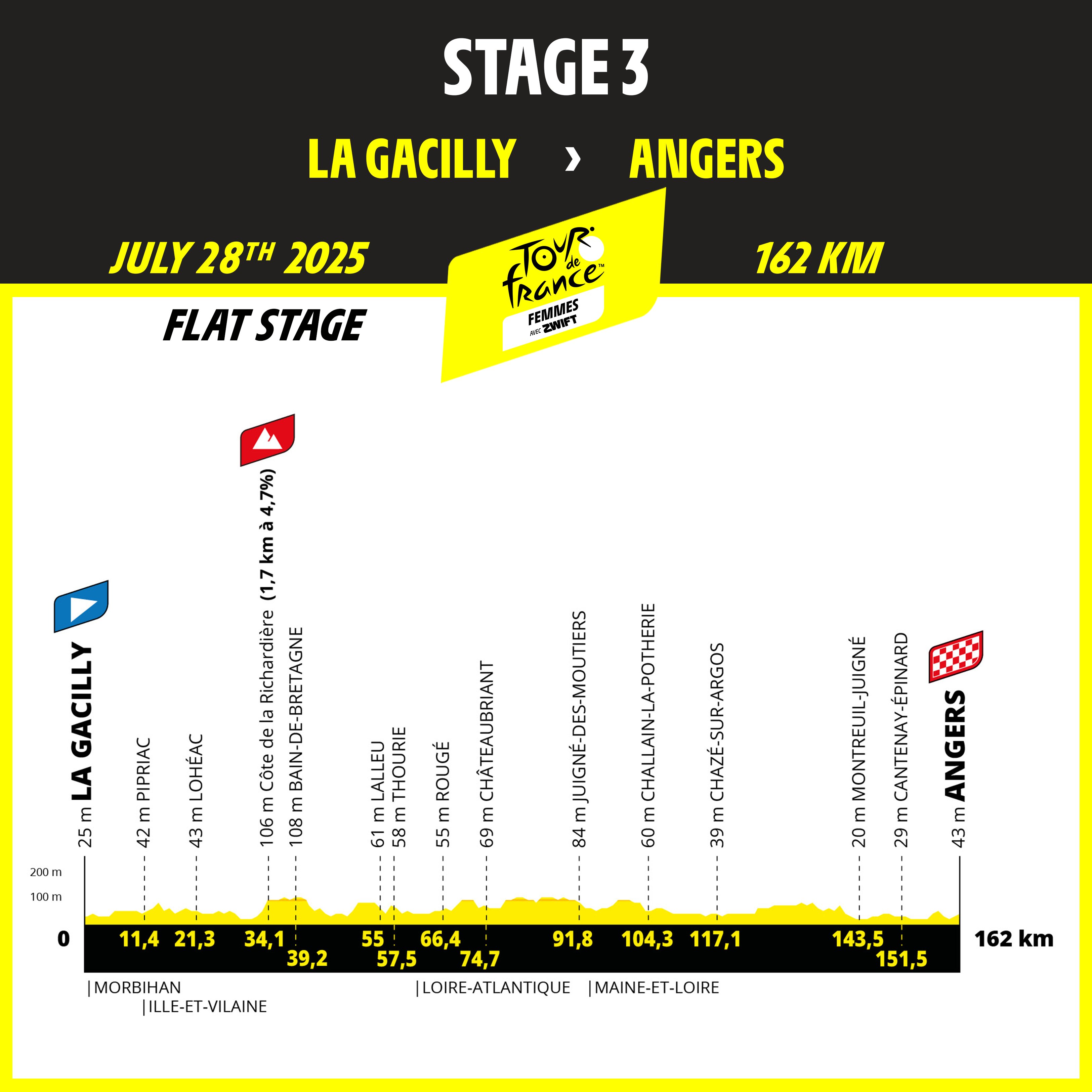
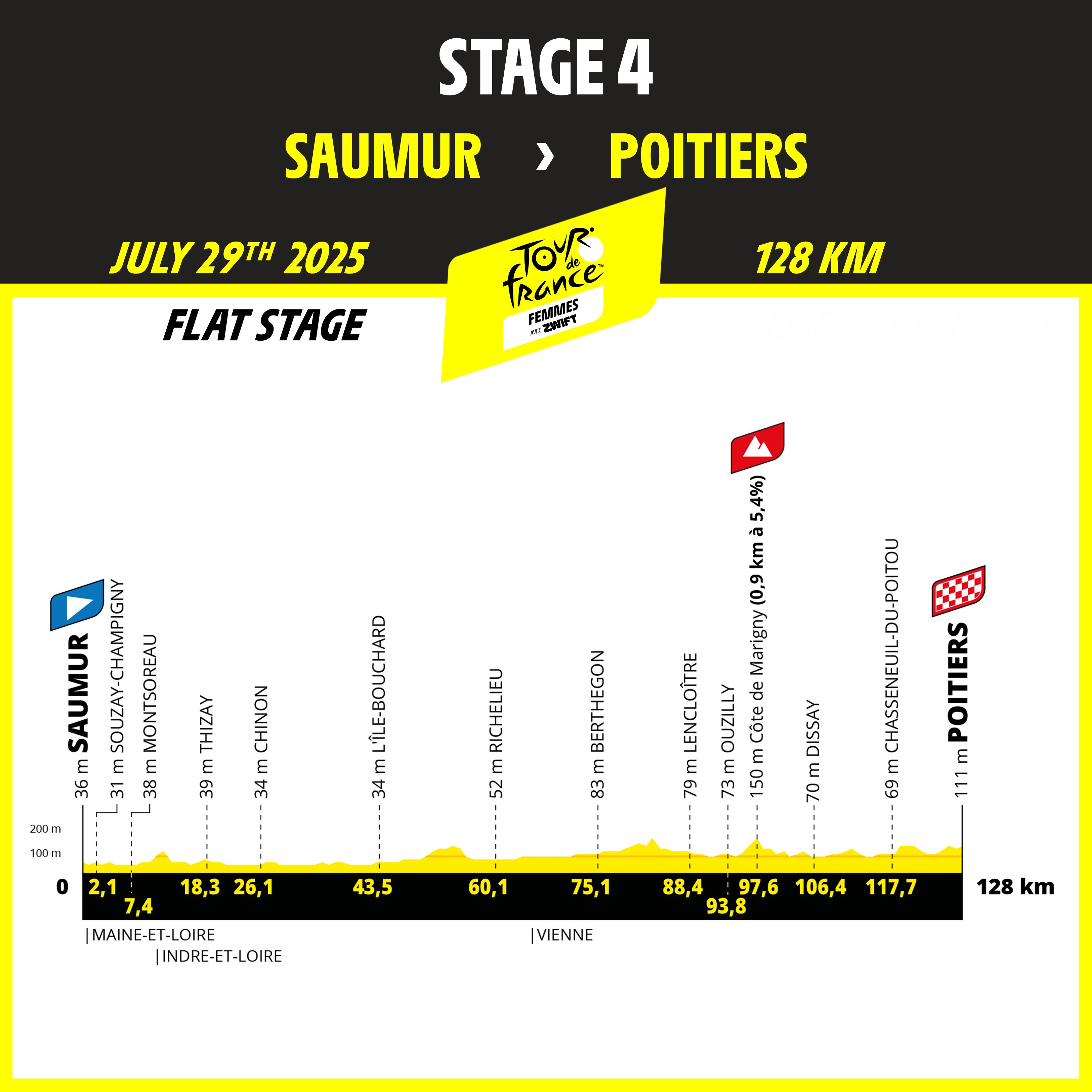
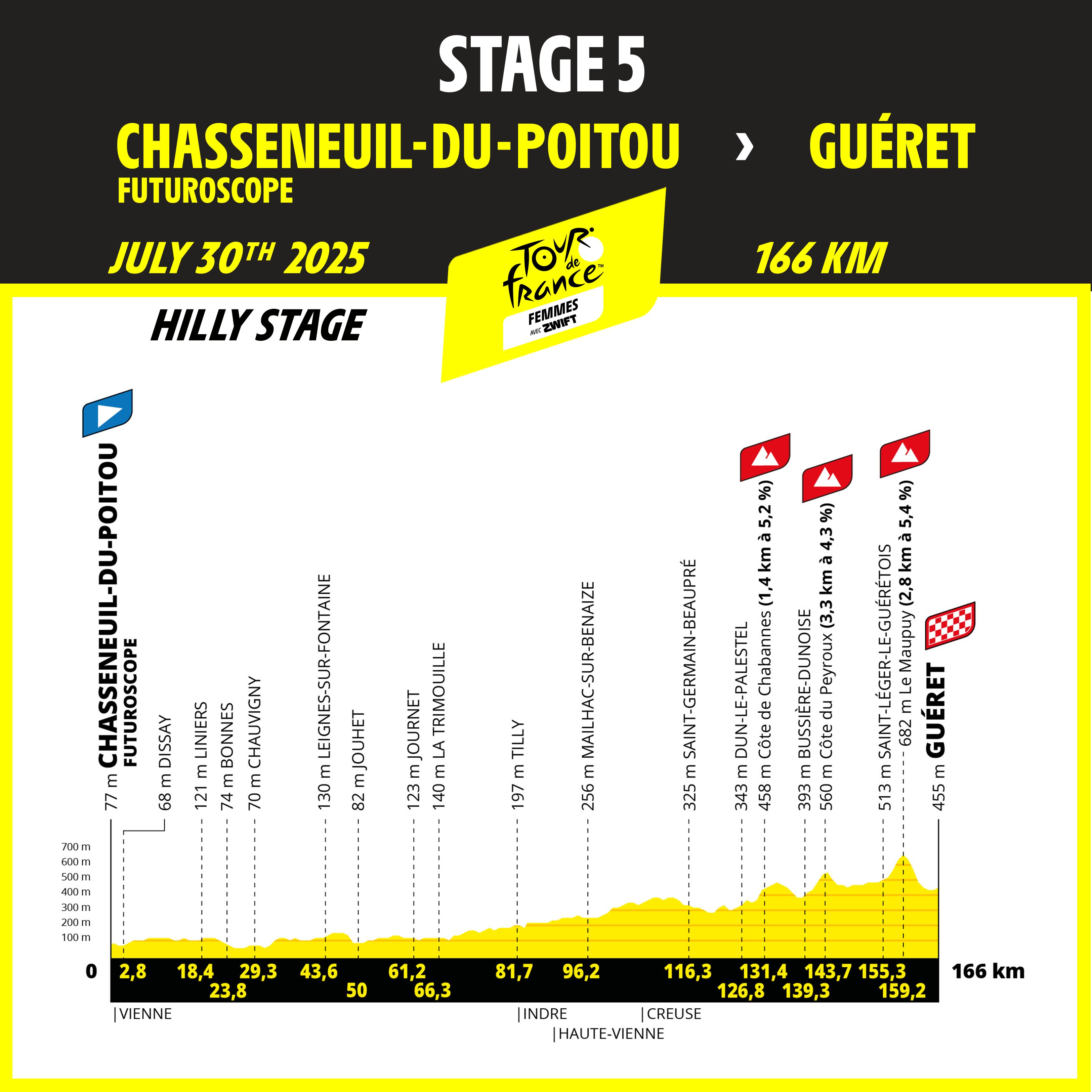
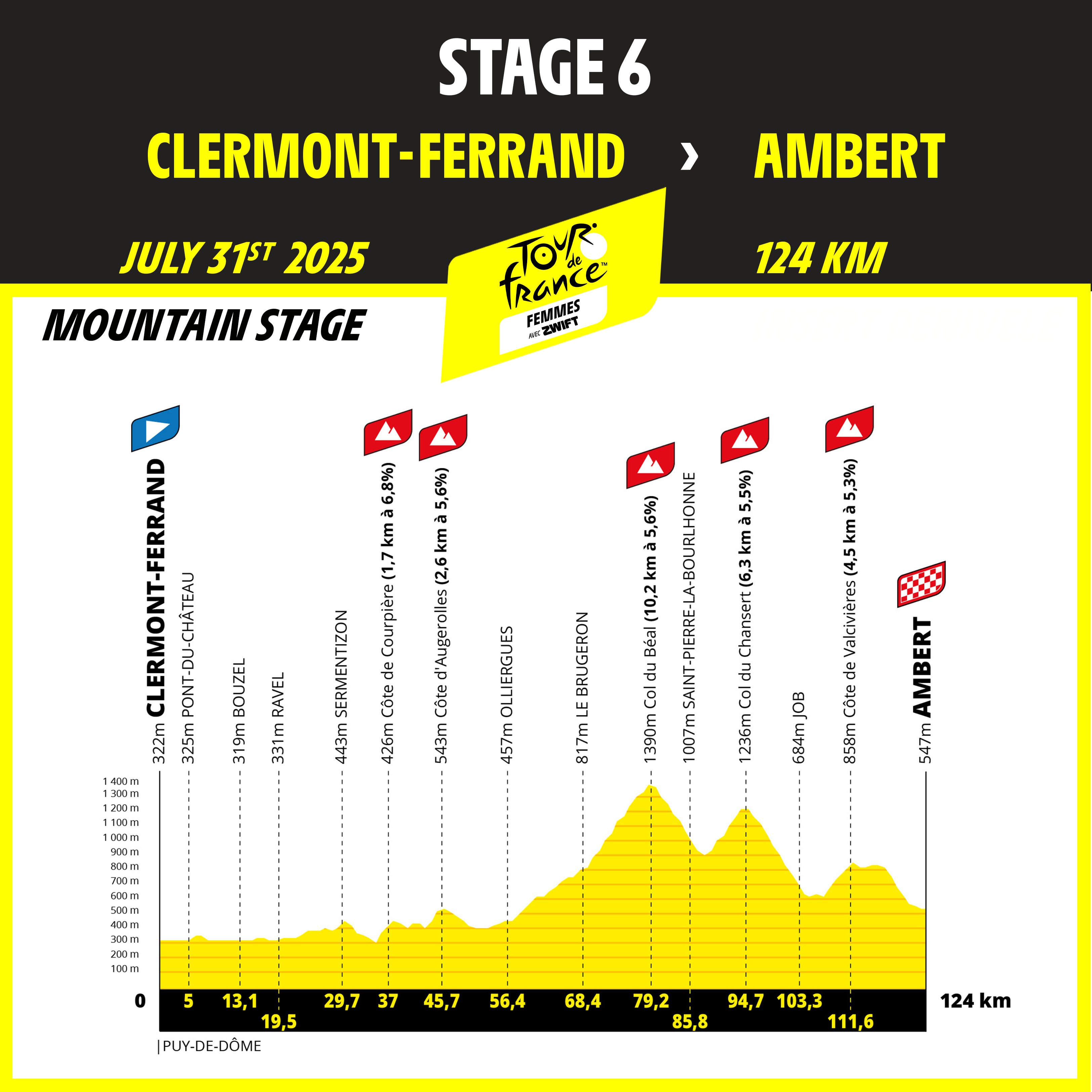
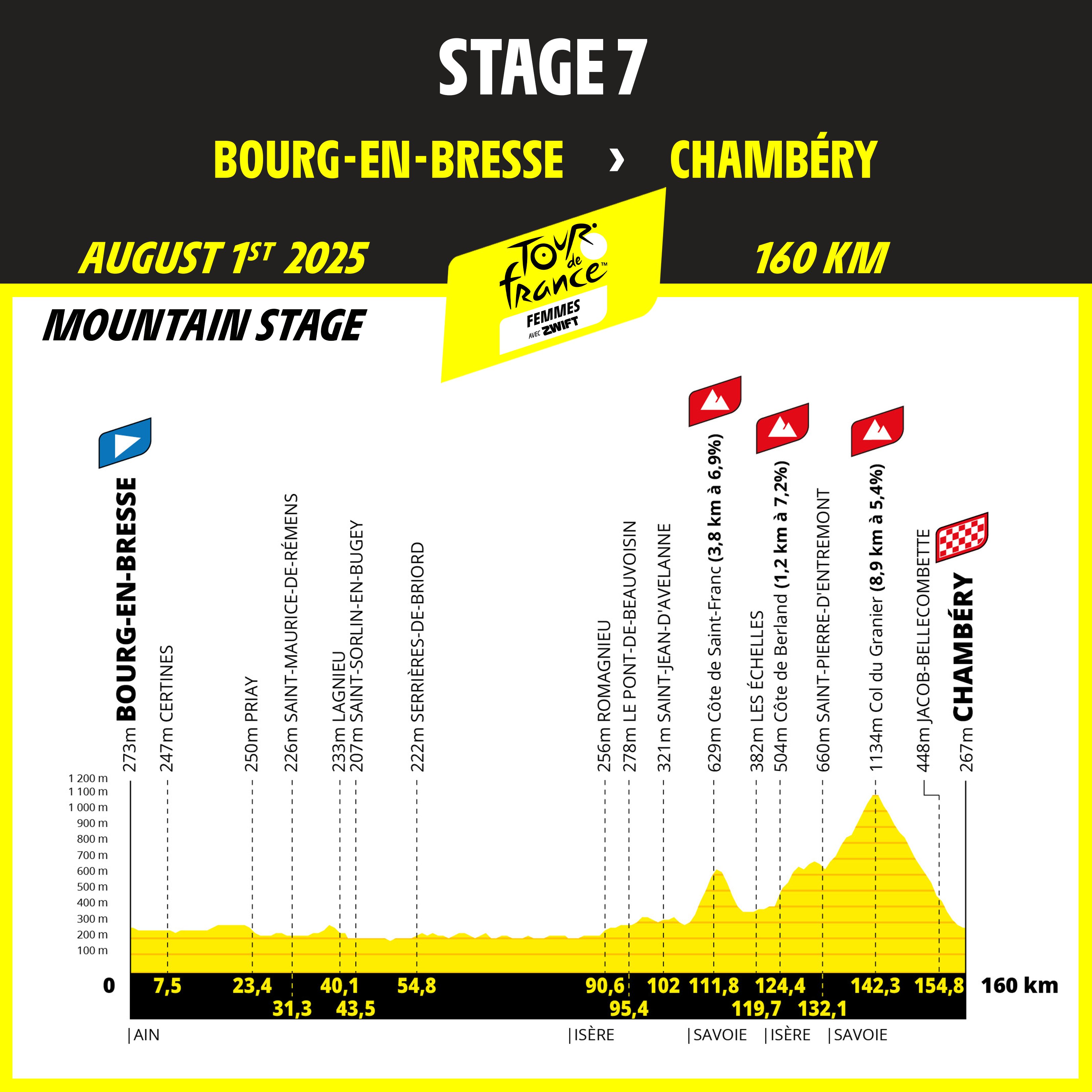
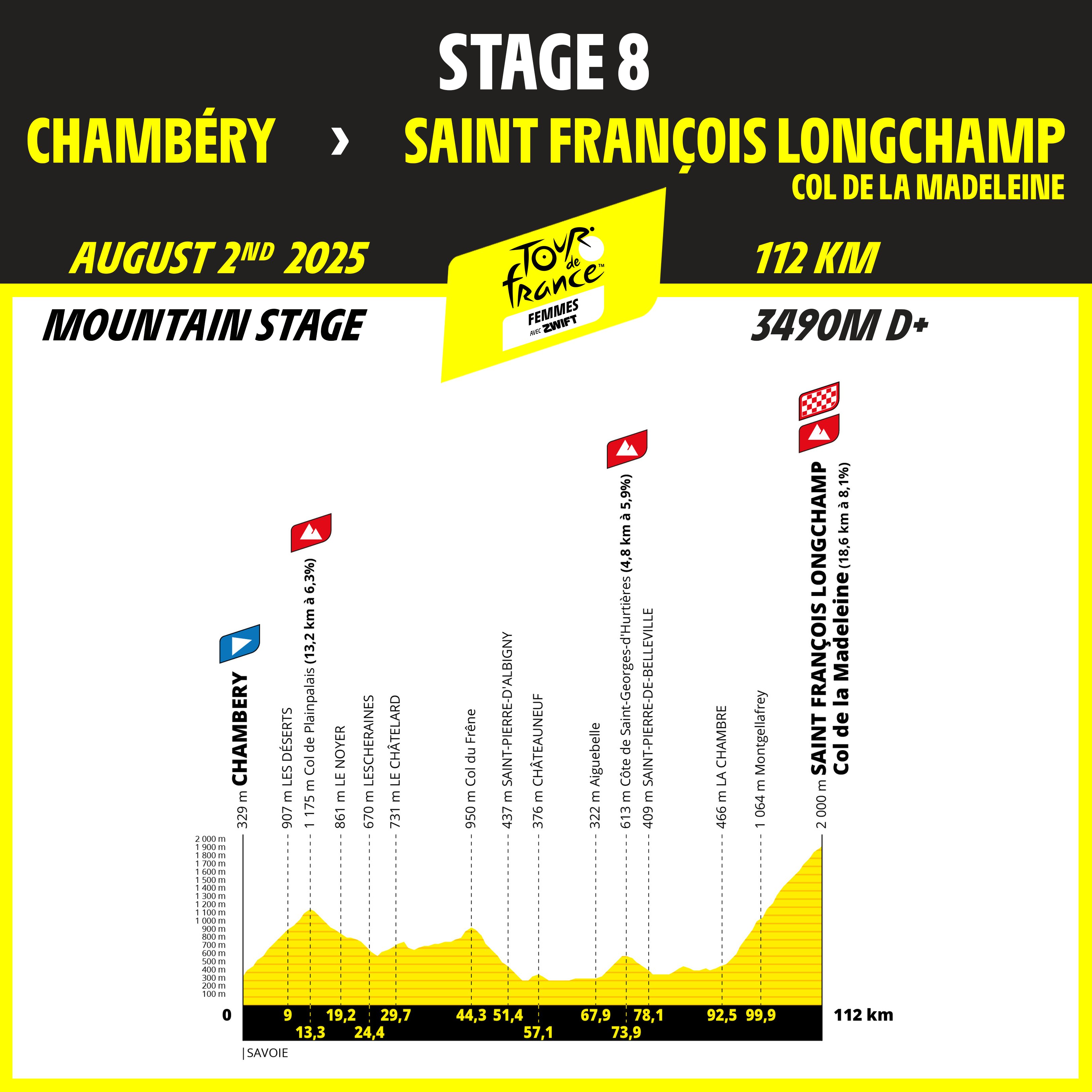
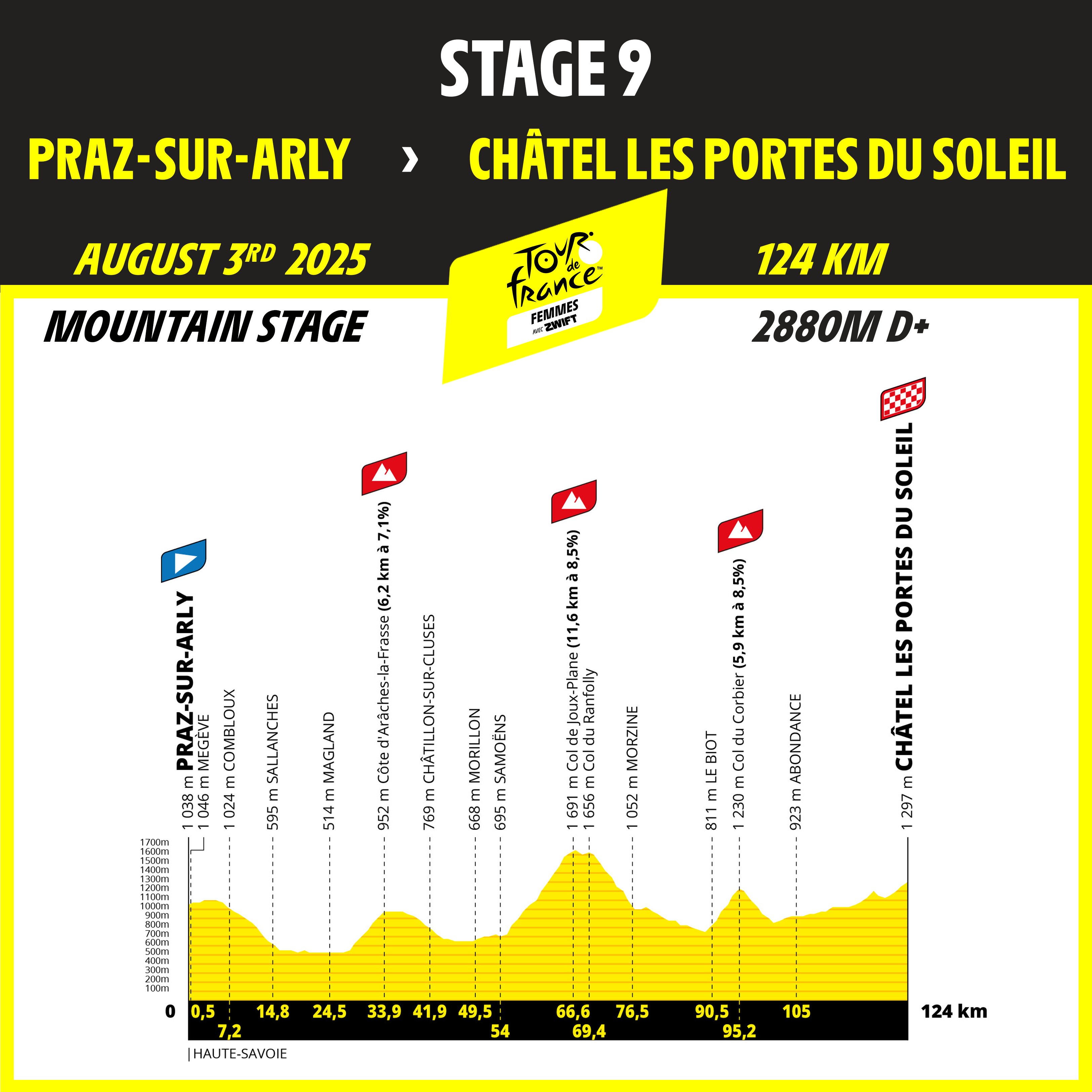
In terms of the marquee mountains, which Rousse made reference to before, we don't have a huge hitter like the Tourmalet or Alpe d'Huez of recent years. We do have the Col de la Madeleine, which is a mighty ascent of the men's Tour that has seen its share of action but usually as a mid-stage climb en route to somewhere like Alpe d'Huez. I'm not sure it's ever been used as a summit finish but will have to double check. In any case, it's an 18.6km climb at 8.1%, rising to 2000 metres of altitude, so it's a beast.
The final day is tamer in comparison but we do go over the Col de Joux Plane, another HC climb, 11.6km at 8.5%. Lance Armstrong, Pedro Delgado and others have run into trouble on this deceptively difficult brute, which is followed by a hair-raising descent into Morzine. Floyd Landis launched his ridiculous assault over the Joux Plane to win the 2006 Tour, which was soon taken off him.
As we're still digesting the Tour de France Femmes route, we're getting a montage of the 2024 Tour de France.
Here's Kirsten Frattini's full story on the women's route
Rousse introducing the Tour de France Femmes route. We'll be getting her thoughts on her choices a little later.

It's now over to the men's route, and like with the women's we're starting with talk of the Grand Depart, which we already know about. It'll be in Lille, in the Nord department of north east France, home of Paris-Roubaix.
"We have french fries, we have beer, and we know how to party," cries a local official from the Nord. Now you have our attention.
Before we get going, here are the latest rumours on the key mountain stages
Tour de France 2025: Triple whammy of mountain top finishes expected in Pyrenees
"It's time, it's time," says Prudhomme.
Here we go!
First of all we have our yellow dot snaking its way through France, before each stage is discussed. It starts out from Lille and heads up to the north coast twice, before making its way west across the top of the country across Normandie and into Brittany, where we have the Mur de Bretagne.
It's then down and, like the women's race, into the Massif Central before we arrive at Toulouse, which prepares us for the Pyrenees. Hautacam is a summit finish, them Peyragudes the next day, and then Luchon-Superbagners. Triple whammy in the Pyrenees in week two confirmed.
Mont Ventoux is in. A couple of transitions to reach the Giant of Provence, which will host a summit finish. The it's another jaunt over to the Alps where the race will be decided. Col de la Loze is back, and there's another summit finish at La Plagne. There's a less decisive penultimate day ahead of the finale in Paris that's back on the agenda after this year's finish in Nice.
Here's the map
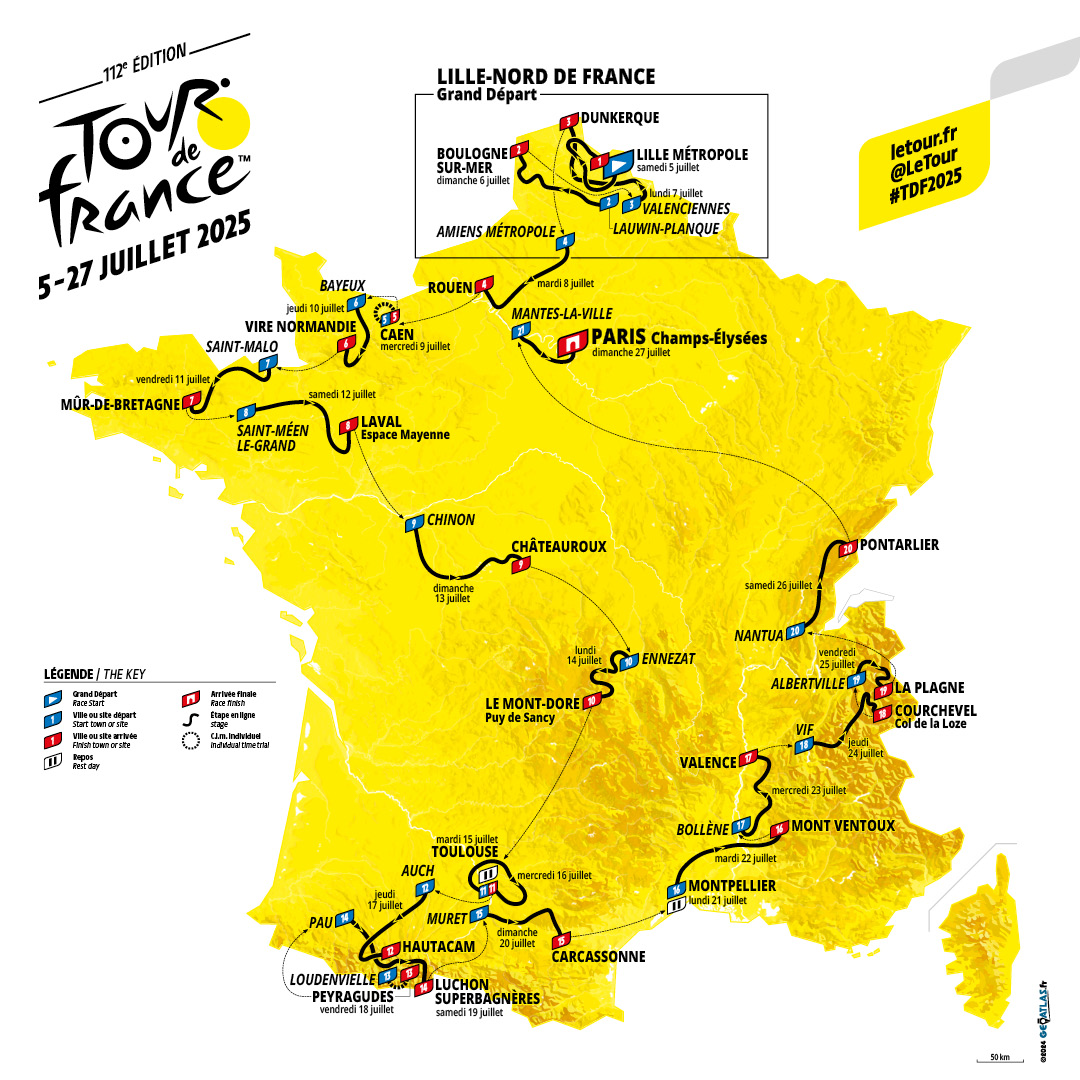
Stage 1 will see a sprinter don the yellow jersey says Prudhomme, despite three ascents of the Cote de Cassel ahead of the finish back in Lille. Stage 2 is punchy, and the longest stage of the Tour at 212km, with three climbs in the final 10km and an uphill finish by the coast at Boulogne-sur-Mer. Stage 3 sees the race return to Dunkirk, also on the coast, with another trip over Cassel but a sprint is to be expected, albeit the wind could be a factor in the finale.
Stage 4 is also exposed to the wind as it heads across to Normandie and it also offers opportunities to puncheurs with the Montee Jacques Anquetil preceding the finish in Rouen. Stage 5 is a time trial, pan-flat and 33 kilometres long. A key stage for the general classification.
Stage 6 features 3,500 metres of elevation across six moderate climbs, with a sharp uphill finish in Vire Normandie. There's an even sharper finish on stage 7 as the race reaches Brittany and finishes on the Mur de Bretagne, which has become a fixture in recent years. Like in 2021, when Mathieu van der Poel won, we have a double ascent of the climb.
Stage 8 is one for the sprinters, finishing in Laval, while stage 9 takes us down towards the centre of France for a finish in Chateauroux, where Cavendish has won three times. Another sprint is on the cards but we've also had crosswinds and echelons in this part of the world.
Stage 10 is on the Monday, so we have 10 stages before our first rest day. Usually it comes after nine. The stage takes us into the Massif Central and the volcano hills. It's a breakaway day, but with 4,400 metres of elevation and a finish on the Puy de Sancy there could also be some GC action.
The rest day comes in Toulouse, and likewise stage 11 starts and finishes in the southern city. It's a sprint day but one with a late climb, and it precedes three days in the Pyrenees.
Pyrenees stages
Stage 12 finishes at Hautacam, after the Col du Soulor and Col des Borderes. Hautacam has its history, most recently Vingegaard dispatching Pogacar in 2023 after a lead-out from Van Aert. 3850m elevation gain in total.
Stage 13 is a mountain time trial, up to Peyragudes and the super-steep altiport used in the James Bond film Tomorrow Never Dies, as well as the 2017 and 2023 editions of the Tour. 11 kilometres, all up a brutal climb with a spectacular finish straight - this is a crucial stage and - for a time trial - will be one of the most hotly anticipated.
Stage 14 is a brutal Pyrenean stage, with 4950m of elevation across beasts like the Tourmalet, Apsin, and Peyresourde, ahead of the summit finish at Luchon-Superbagneres, 36 years since its last inclusion.
Stage 15 sees the race exit the Pyrenees for a likely sprint in Carcassonne, although there are some hills along the way. Then comes the second rest day in Montpellier, on the traditional Monday, which means we have a five-stage second 'week'.
The final week kicks off on stage 16 with one of the key stages, finishing atop Mont Ventoux, the Giant of Provence, one of the most storied climbs of Tour de France history. The last finish at the summit was back in 2013, with the 2016 finish having to be moved down the mountain due to the strong winds that have battered this incongruous mountain in Provence and shaped its 'bald' landscape. In 2021 it was climbed twice but the finish was down in Malaucene. It's a key rendezvous.
Stage 17 should see a sprint in Valence, a fixture on the Tour route, as the race heads towards the Alps. The first Alpine stage is a beast, the hardest stage of the Tour, says Prudhomme. We go over the Col du Glandon, the Col de la Madeleine (which features in the women's race as a summit finish), and then over to the Col de la Loze, the high-altitude bike path that links Courchevel and Meribel. This was first used in 2020, and then again in 2023, but this time we ascend from Courchevel, not that it's any easier, with super-steep gradients and a finish at 2304 metres of altitude. In total there are 5,550 metres of elevation gain. Queen stage, right there.
Stage 19 is another savage one, with 4,600 metres of elevation gain, but packed into just 130km so it should be explosive. Col de Saisies, Col de Pre, and Cormet de Roseland are some of the Alpine classics on the menu ahead of the finish at the ski resort at La Plagne, another finish above the 2,000 metre barrier.
Stage 20, the penultimate day, sees the race leave the Alps and head up the east coast. No GC action here but we've seen this sort of thing in the past - a sprint opportunity that never actually results in a sprint because all the sprinters are knackered, if they're still in the race at all. And stage 21 is a return to the finish we all know and love on the Champs Elysees of the French capital of Paris.
So there we have it. In a very brief, reactionary nutshell, we have 44km of time trialling, although 11km of those are straight up a mountain. It's not a ridiculously low number of time trialling kilometres as we've seen in recent years but it's still very much a climber's Tour.
That mountain time trial is sandwiched by two Pyrenean summit finishes in the second week, the second of which is particularly heavy. Only two stages in the Alps in the final week but the first is surely the queen stage and the second doesn't lag too far behind, and let's not forget that final week kicks off with Mont Ventoux. The first half of the race has a fair amount of punchy terrain but the second half of the race is all about the mountains.
Some stats
- 3,320 kilometres in total
- 51,550 metres total elevation gain - this is similar to last year and indeed previous years
- 6 mountain stages (excluding the mountain time trial)
- 5 summit finishes (again, if you count the mountain TT, it's six)
- 2 time trials
Here's Stephen Farrand's full story on the route
Tour de France 2025 route revealed featuring two time trials and six summit finishes
We won't bring you every stage profile - although you'll be able to find them on our Tour de France hub - but we'll run through some of the key ones.
Here are the two traditional Pyrenees stages - we don't yet have a profile for the stage 13 mountain TT.
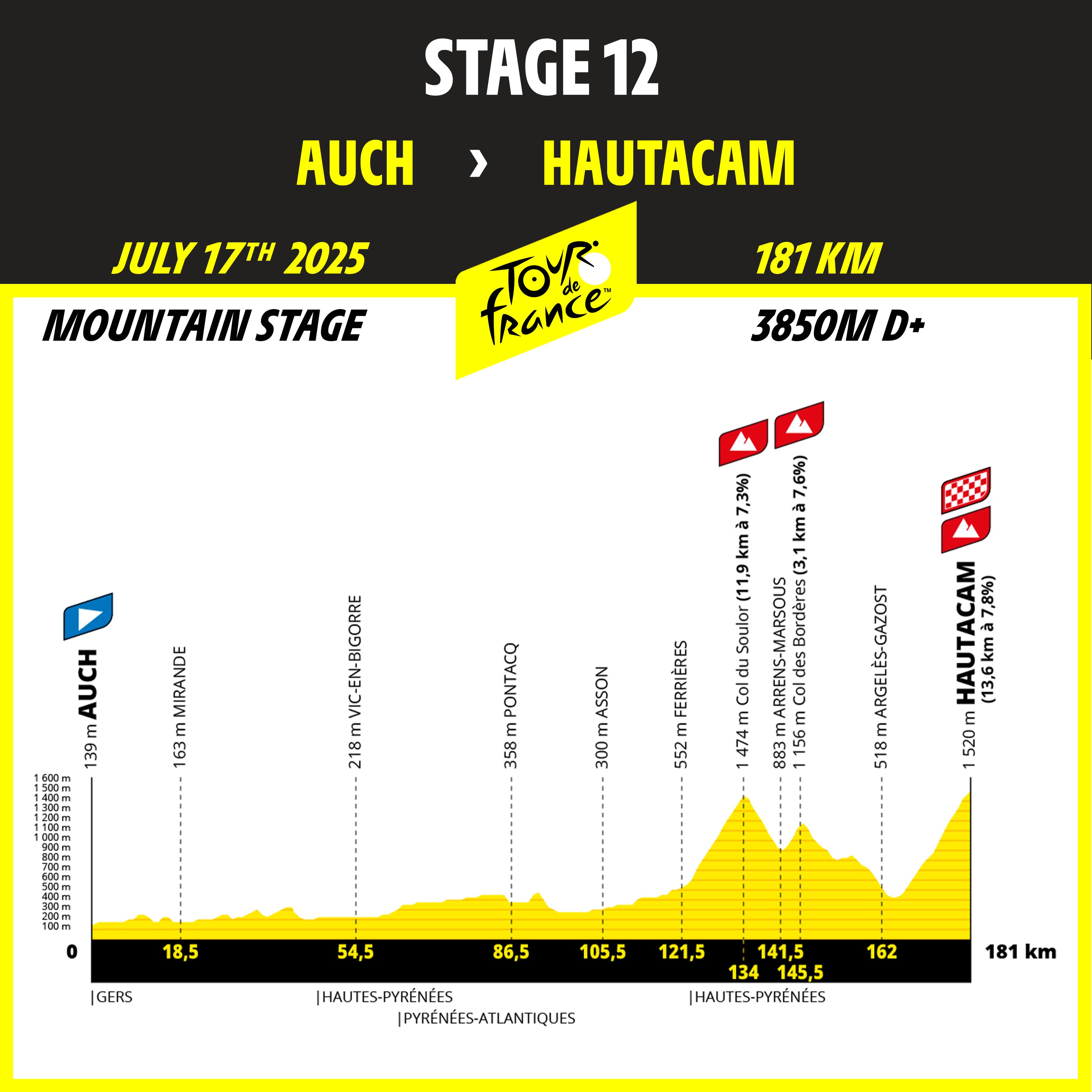
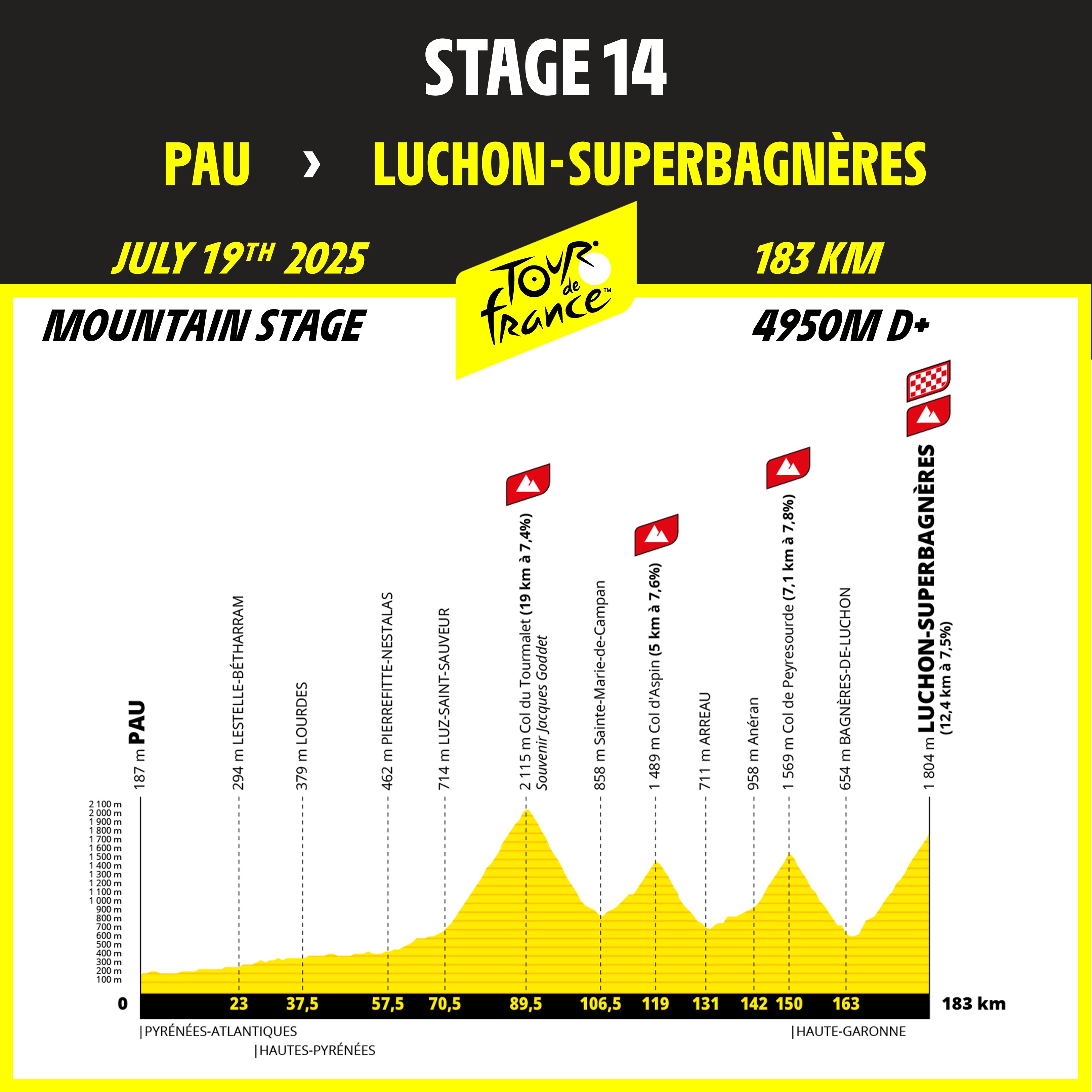
And here is the Alpine duo.
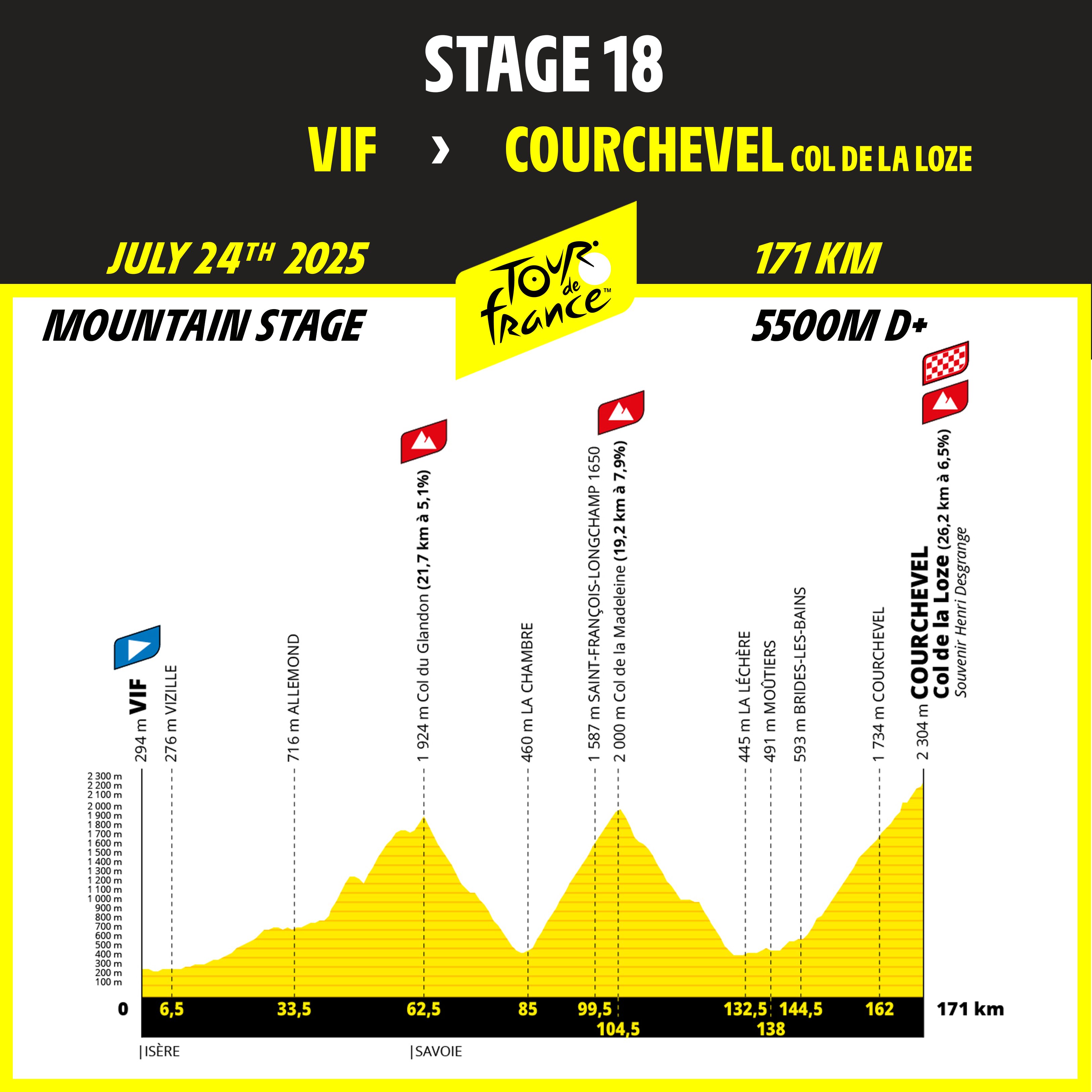
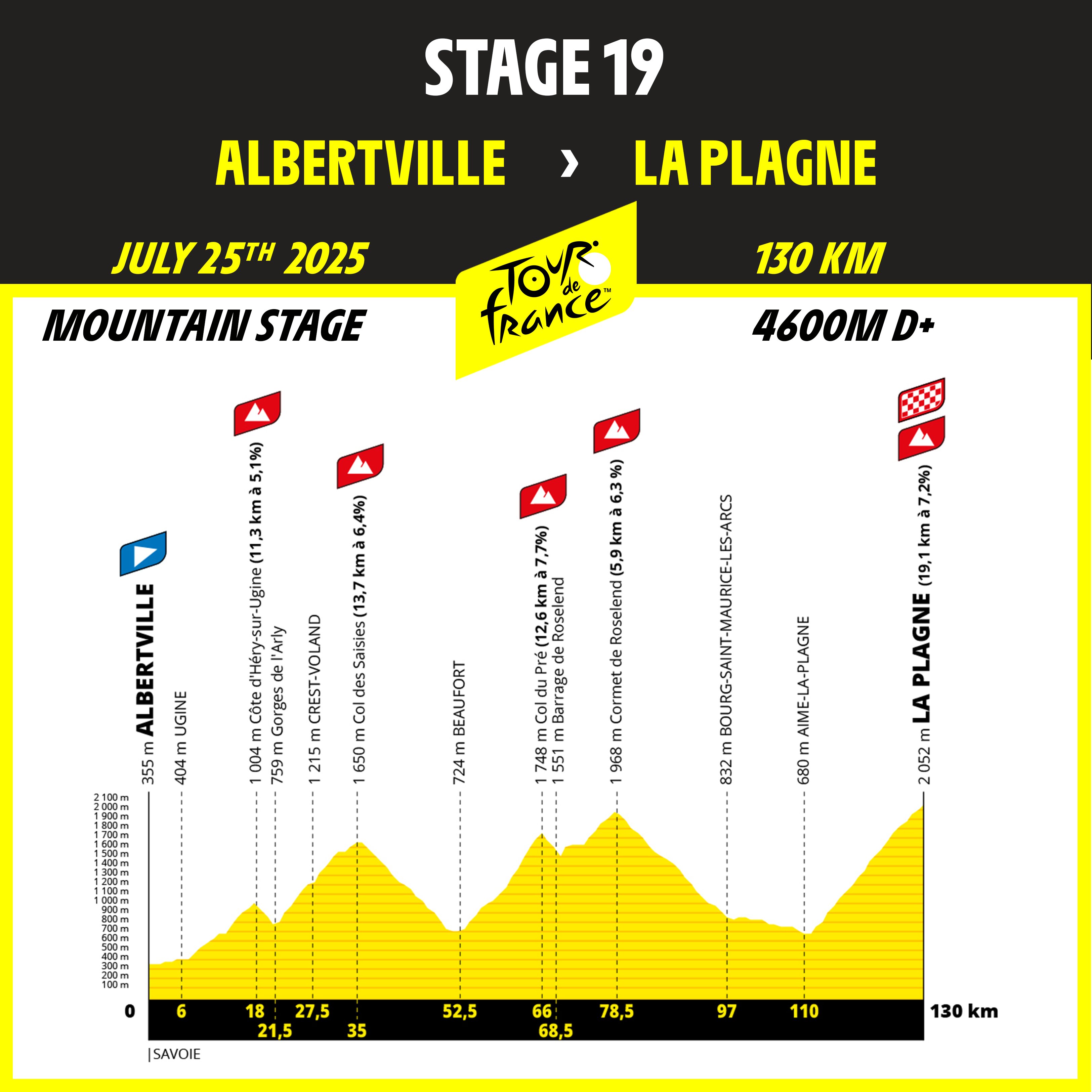
Some other nuggets now. This is the 'other' mountain stage and while it doesn't command the attention like the Pyrenees, Alps, or Mont Ventoux, it's still a pretty big day out in the Massif Central.
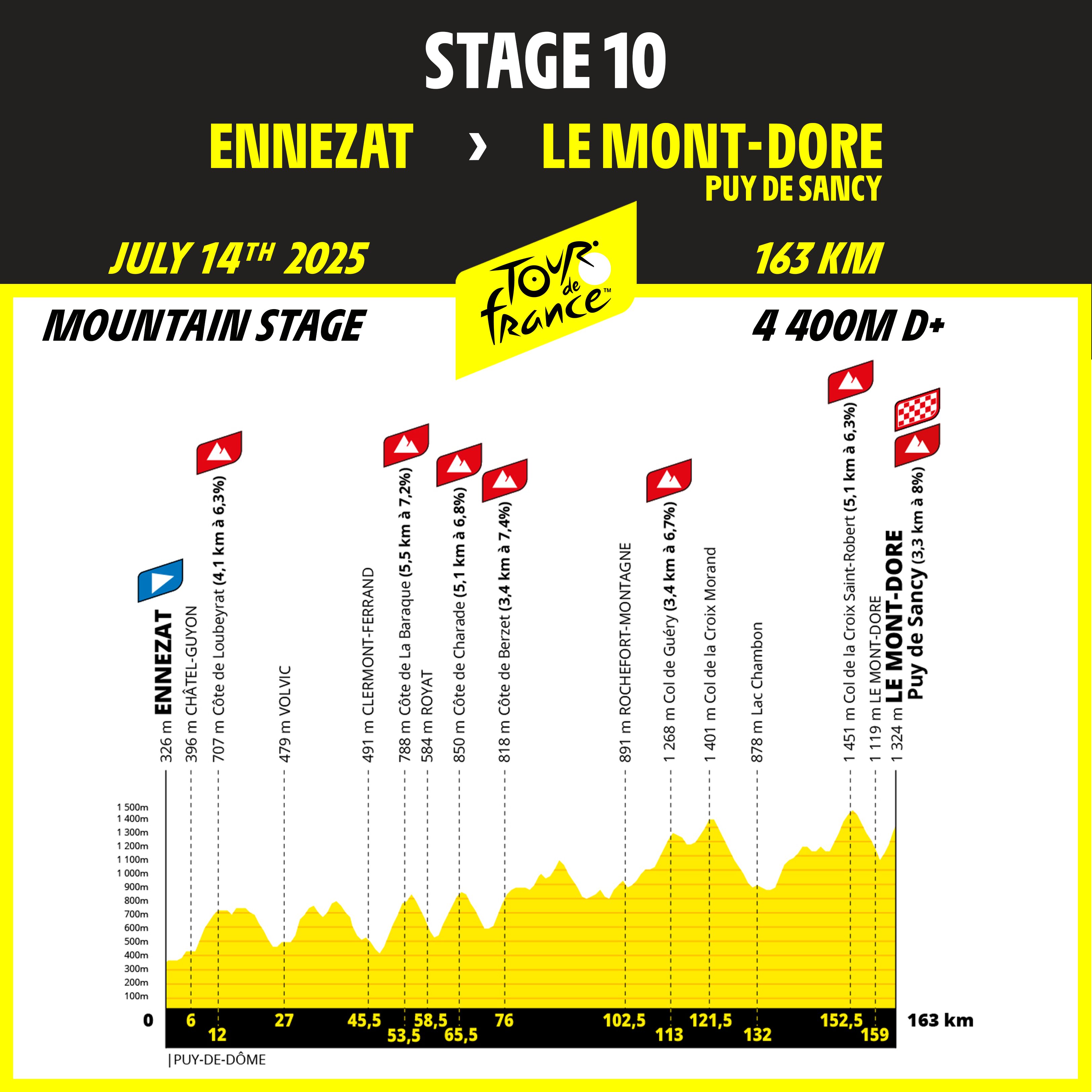
Here's the smattering of opening-week punchy stuff.
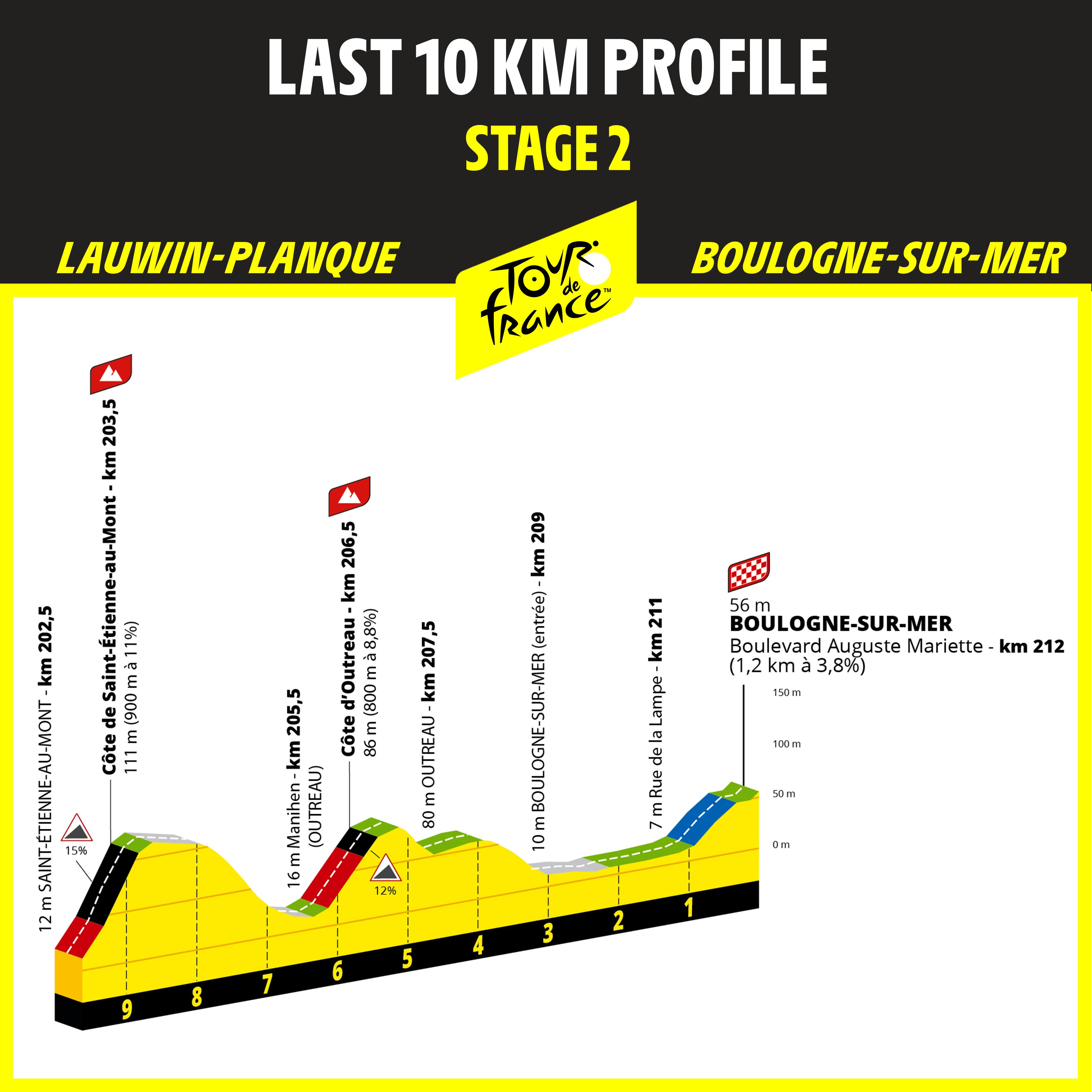
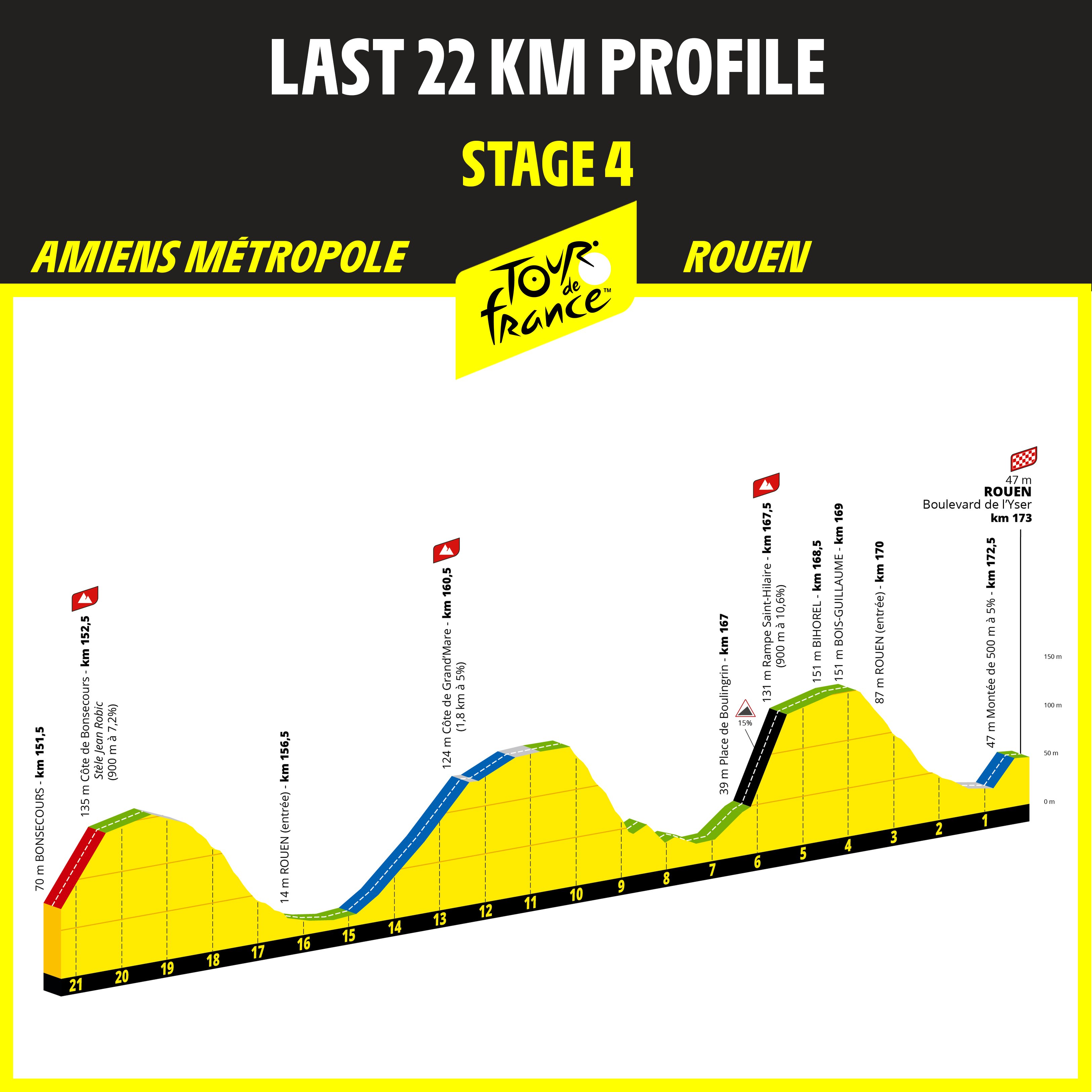
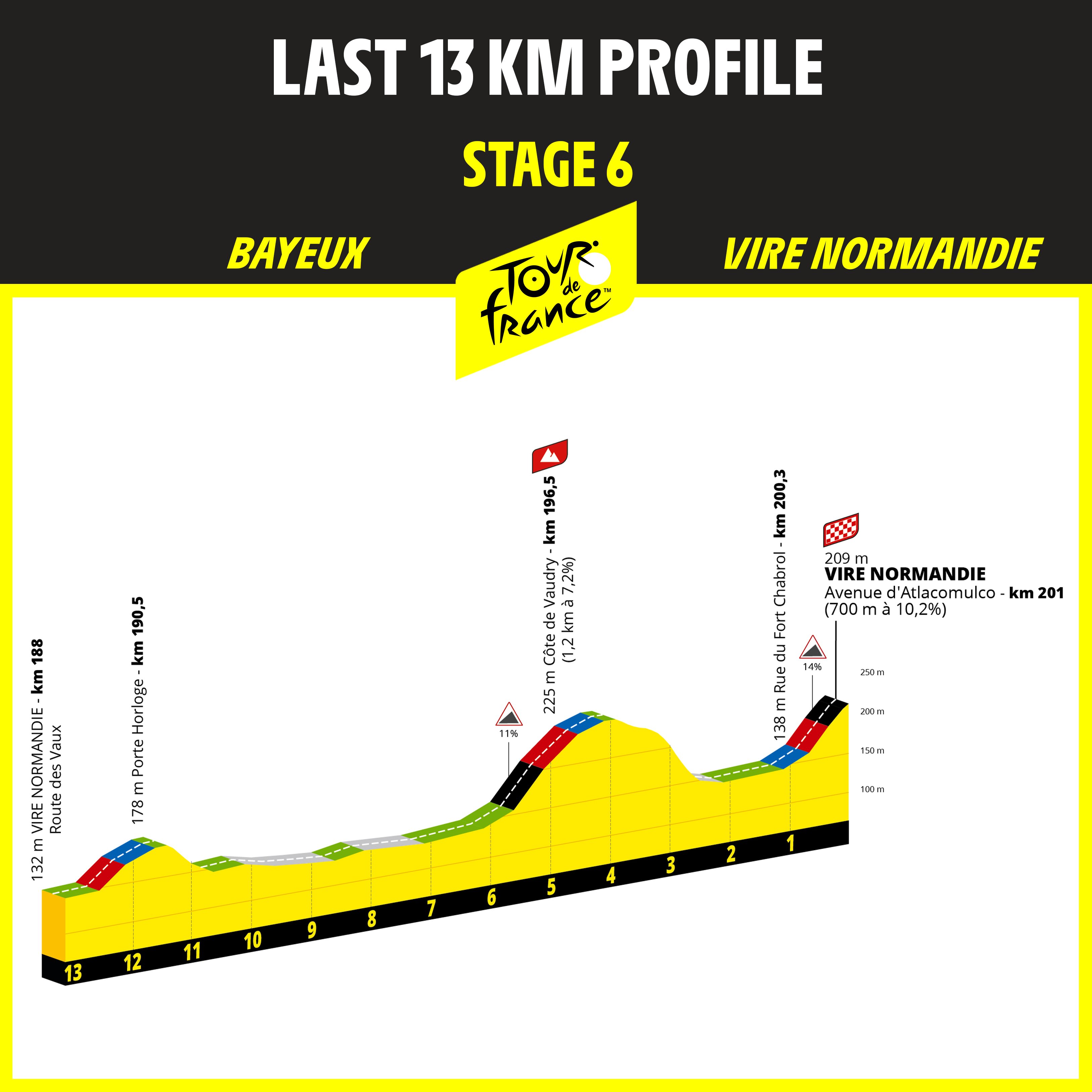
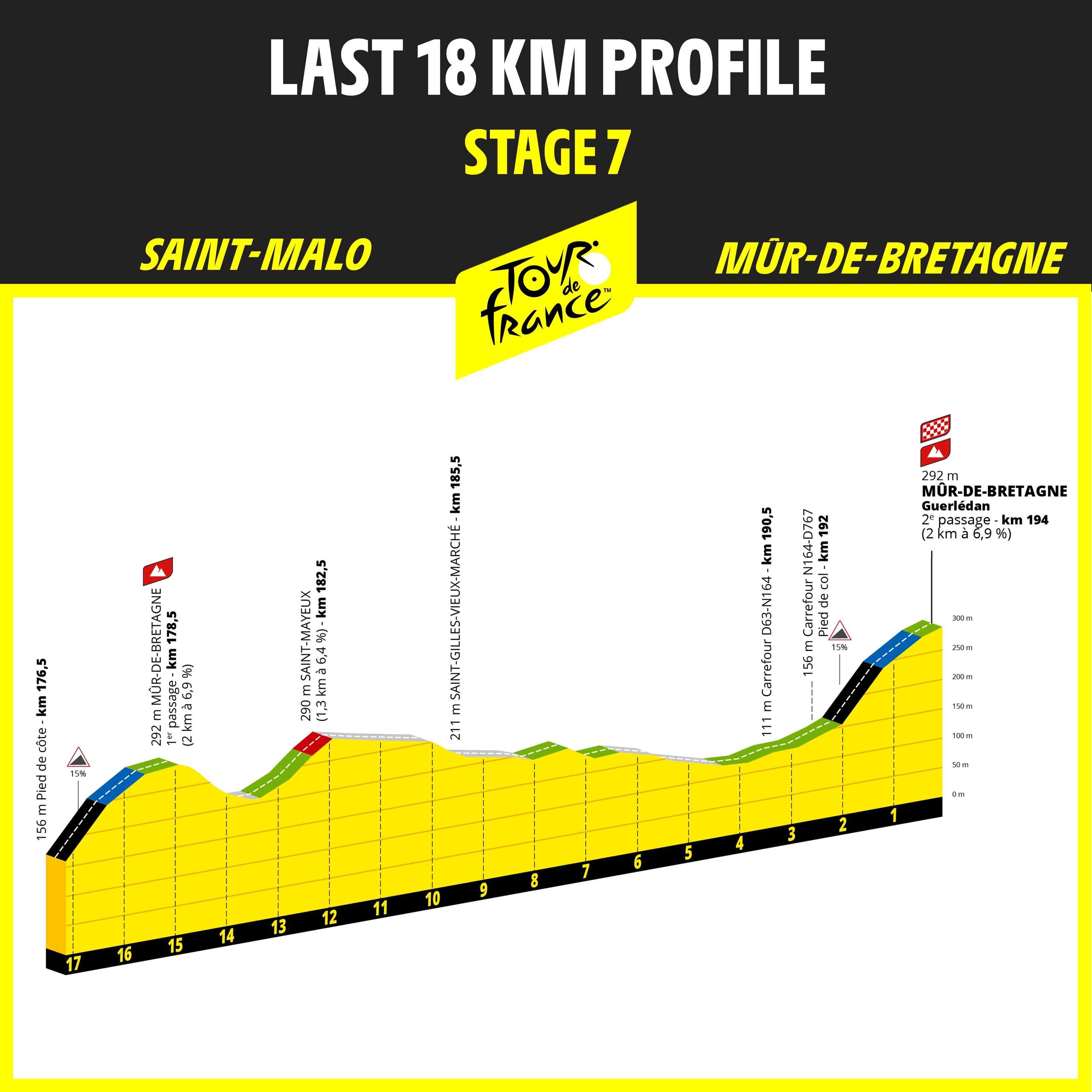
The show's over and the action has currently headed backstage, where Prudhomme, Rousse, and all the riders and team bosses are being quizzed on their reactions.
Here was Mark Cavendish on stage a little earlier. One of the side storylines was him sort of, slightly, leaving the door open for a Tour de France return in 2025.
He had said he was retiring, but there hasn't been any final fanfare, beyond reports that the upcoming Singapore Criterium will be his final race, even though it's not a race. He has hinted in a very vague interview that he doesn't know what he's doing next year but categorically ruled out ever returning to the Tour de France.
And now, I've gone back and checked and he was asked directly about taking the 35th stage win at the age of 39 and the prospect of taking win number 36 at the age of 40 in 2025. "Yeah, we'll see," is the reply with a nervous grin.
He'll probably just retire, but it's all a little odd.

Tour de France 2025 stages
| Date | Stage | Start/Finish | Distance | Type |
|---|---|---|---|---|
| July 5 | Stage 1 | Lille – Lille | 185km | Flat |
| July 6 | Stage 2 | Lauwin-Planque – Boulogne-sur-Mer | 212km | Punchy |
| July 7 | Stage 3 | Valenciennes – Dunkerque | 172km | Flat |
| July 8 | Stage 4 | Amiens – Rouen | 173km | Punchy |
| July 9 | Stage 5 | Caen – Caen ITT | 33km | Time Trial - flat |
| July 10 | Stage 6 | Bayeux – Vire Normandie | 201km | Punchy |
| July 11 | Stage 7 | Saint-Malo – Mûr-de-Bretagne | 194km | Punchy |
| July 12 | Stage 8 | Saint-Méen Le-Grand – Laval | 174km | Flat |
| July 13 | Stage 9 | Chinon – Châteauroux | 170km | Flat |
| July 14 | Stage 10 | Ennezat – Le Mont-Dore | 163km | Medium Mountain |
| July 15 | Rest Day | Toulouse | – | Row 10 - Cell 4 |
| July 16 | Stage 11 | Toulouse – Toulouse | 154km | Flat |
| July 17 | Stage 12 | Auch – Hautacam | 181km | High mountain |
| July 18 | Stage 13 | Loudenvielle – Peyragudes ITT | 11km | Time trial - high mountain |
| July 19 | Stage 14 | Pau – Luchons-Superbagnéres | 183km | High mountain |
| July 20 | Stage 15 | Muret – Carcassonne | 169km | Lumpy |
| July 21 | Rest Day | Montpellier | – | Row 16 - Cell 4 |
| July 22 | Stage 16 | Montpellier – Mont Ventoux | 172km | Mountain |
| July 23 | Stage 17 | Bollène – Valence | 161km | Flat |
| July 24 | Stage 18 | Vif – Courchevel Col de la Loze | 171km | High mountain |
| July 25 | Stage 19 | Albertville – La Plagne | 130km | High mountain |
| July 26 | Stage 20 | Nantua – Pontarlier | 185km | Lumpy |
| July 27 | Stage 21 | Mantes-la-Ville – Paris | 120km | Flat |
Tour de France Femmes 2025 stages
| Date | Stage | Start/Finish | Distance | Type |
|---|---|---|---|---|
| July 26 | Stage 1 | Vannes to Plumelec | 79km | Punchy |
| July 27 | Stage 2 | Brest to Quimper | 110km | Punchy |
| July 28 | Stage 3 | La Gacilly to Angers | 162km | Flat |
| July 29 | Stage 4 | Saumur to Poitiers | 128km | Flat |
| July 30 | Stage 5 | Jaunay-Marigny-Futuroscop to Guéret | 166km | Punchy |
| July 31 | Stage 6 | Clermont-Ferrand to Ambert | 124km | Medium mountain |
| August 1 | Stage 7 | Bourg-en-Bresse to Chambéry | 160km | Medium mountain |
| August 2 | Stage 8 | Chambéry to Saint François Longchamp-Col de Madeleine | 112km | High mountain |
| August 3 | Stage 9 | Praz-sur-Arly to Châtel | 124km | High mountain |
Here's Tour de France Femmes director Marion Rousse in front of the map of the 2025 edition.
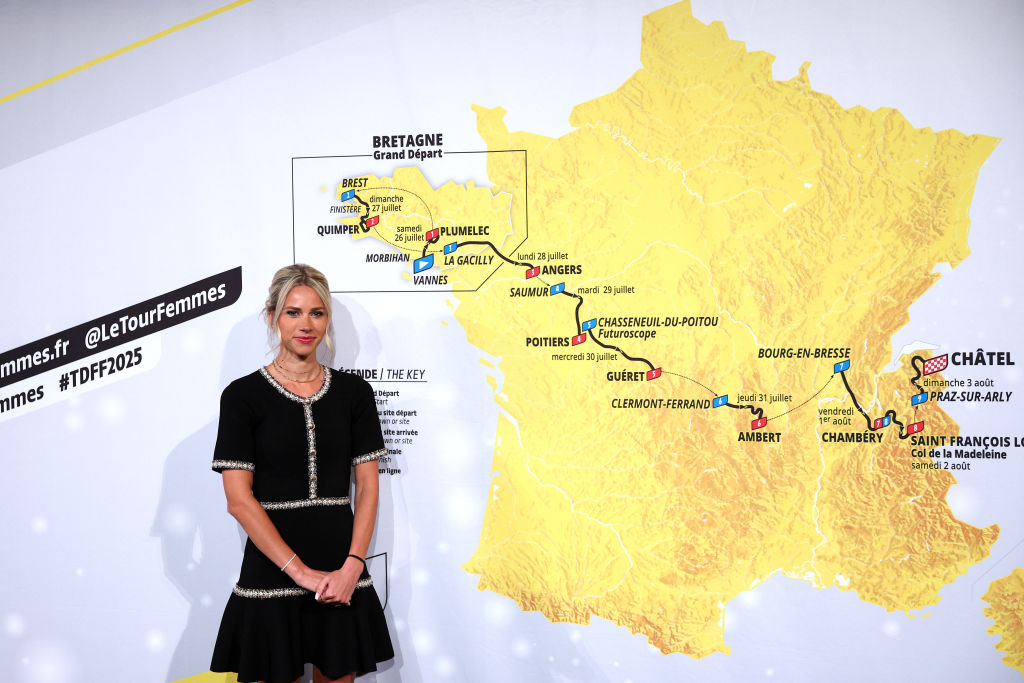
And here's what Rousse had to say to France Info
"The important thing to underline is that we have an extra day. For the opening two stages we've chosen punchy terrain that characterises Brittany, and then you design the route according to where you'll end up - so that's a big line over to the Alps. What you see is that the Tour as a whole is harder than previous years - we've made a step up. So we've designed the route with the idea of wanting to put on something more difficult. From the Thursday to the Sunday it's either medium- or high-mountain stages. We've included one mythical ascent in the past two years and this year there are two, with the Joux Plane and the Madeleine. Never has the final weekend been so tough.
As for the notable absence of time trialling: "We are still at the stage where we don't want to be obliged to do certain things. We want to propose different routes from one year to the next, and this year it turned out that there would be no time trial because that allows us to put on even longer stages, and evolve more rapidly. When you have a time trial, you stay in one place. We are well aware that time trials are part of Grand Tours, and that's why I'm not saying there won't be one next year. But this year we made the choice not to have one, and to have a slightly harder route."
She adds that the extra day and the extra difficulty sends a "strong message" about the growth of women's cycling and the way the Tour de France Femmes is solidifying itself as it gears up for its fourth edition.
Here's Prudhomme with his map
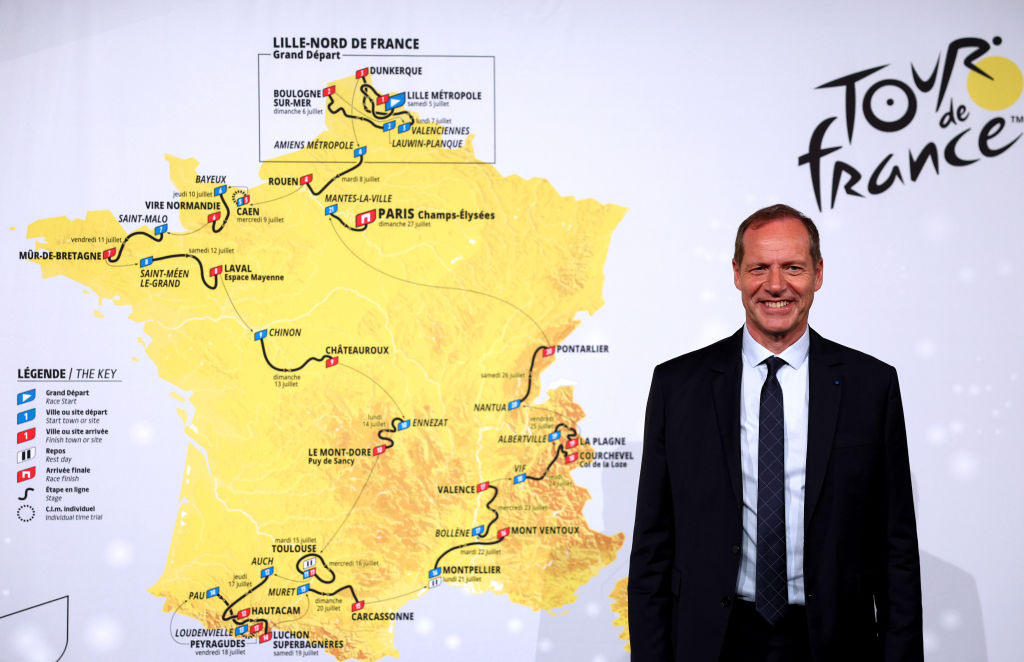
And here are Prudhomme's thoughts. Much of the chatter has been about this feeling more like a classic Tour of old, with headline blocks in the Alps and Pyrenees and perhaps less of an overt attempt to create drama elsewhere...
"Whenever we don't start out from the foot of the mountains it's always a 'classic' Tour, or it's considered a 'classic' Tour, because it's a question of geography. If we start from Lille we have a long way to get to the mountains. We have a flat opening week but it's deceiving to the eye. For 15 years we've looked to put difficulties among the flat, but here we do so in a systematic manner, with four finishes made for the puncheurs in the opening week. Then the second part of the Tour de France we launch into the mountains.
"Last year, for me, the best stage was the one in the Massif Central. The department of the Puy de Dome is always spectacular. For us, the Pyrenees and the Alps are indispensable, but what we've wanted to do and to show is that the race can play out elsewhere."
We'll have plenty more reaction from riders and teams coming in across both route announcements, so keep your eyes peeled on the site over the next few hours.
Latest on Cyclingnews
-
Best entry-level gravel bikes 2025: Versatile bikes to head off-road
New to gravel? Here are our top picks for entry-level gravel bikes in 2025 for commuting, adventure riding, and off-road fun -
Uno‑X Mobility to race as 7‑Eleven at Liège-Bastogne-Liège for one day only in iconic changeout jersey of the 80s
Men's and women's teams swap red and yellow for green, white and red to revive 'a piece of cycling history' in tribute to American team and Merckx -
'I can only blame myself' – Remco Evenepoel admits 'mistake' behind Pogačar at Flèche Wallonne, but remains confident for Liège-Bastogne-Liège
Olympic champion turns full focus to fourth Monument Classic of 2025 on Sunday after struggling in the cold and rain to ninth
-
'It takes a bit of pressure off' – Thymen Arensman to share Ineos Grenadier Giro d'Italia leadership with Egan Bernal
Dutchman hoping for another top-six finish as he explores post-altitude form at Tour of the Alps -
Jonas Vingegaard fully recovered from concussion, with route to Tour de France rematch with Tadej Pogačar revealed
'The focus is now fully on the Tour. The preparations have truly begun' says Dane, with racing return to come at the Dauphiné after altitude camp -
Factor launches Monza as an aero race bike for the masses
New Factor road bike retains many of the features of the Ostro VAM, but with simplified construction
-
Ponderosa Pines – A new gravel race to decide the 2025 Australian national champions
Tiffany Cromwell, Rebecca Henderson and defending champion Brendan Johnston among those set to vie for green and gold jersey in South Australia Saturday -
Tour of the Gila: Lauren Stephens and Eric Brunner set the GC markers on stage 1 with Tyrone time trial victories
Defending women's champion Stephens dominates ITT with one minute margin over 17-year-old runner-up Sidney Swierenga -
'I suffered because of the cold' - Miserable weather affects Thibau Nys' debut performance at Flèche Wallonne
'I was too hot and then too cold again. That really affected my legs, very early in the final' Lidl-Trek rider finishes 8th despite discomfort in rain-soaked Huy
